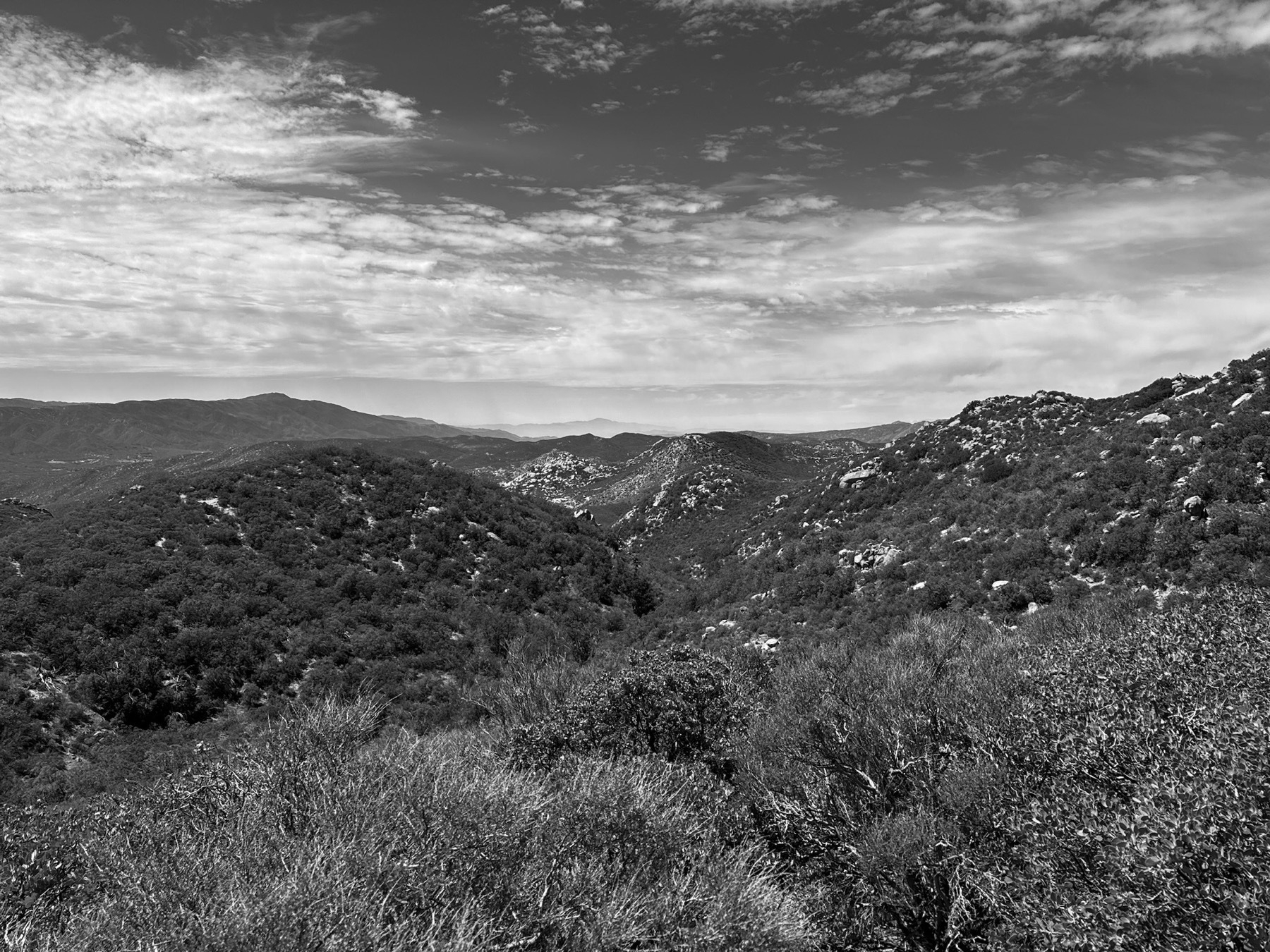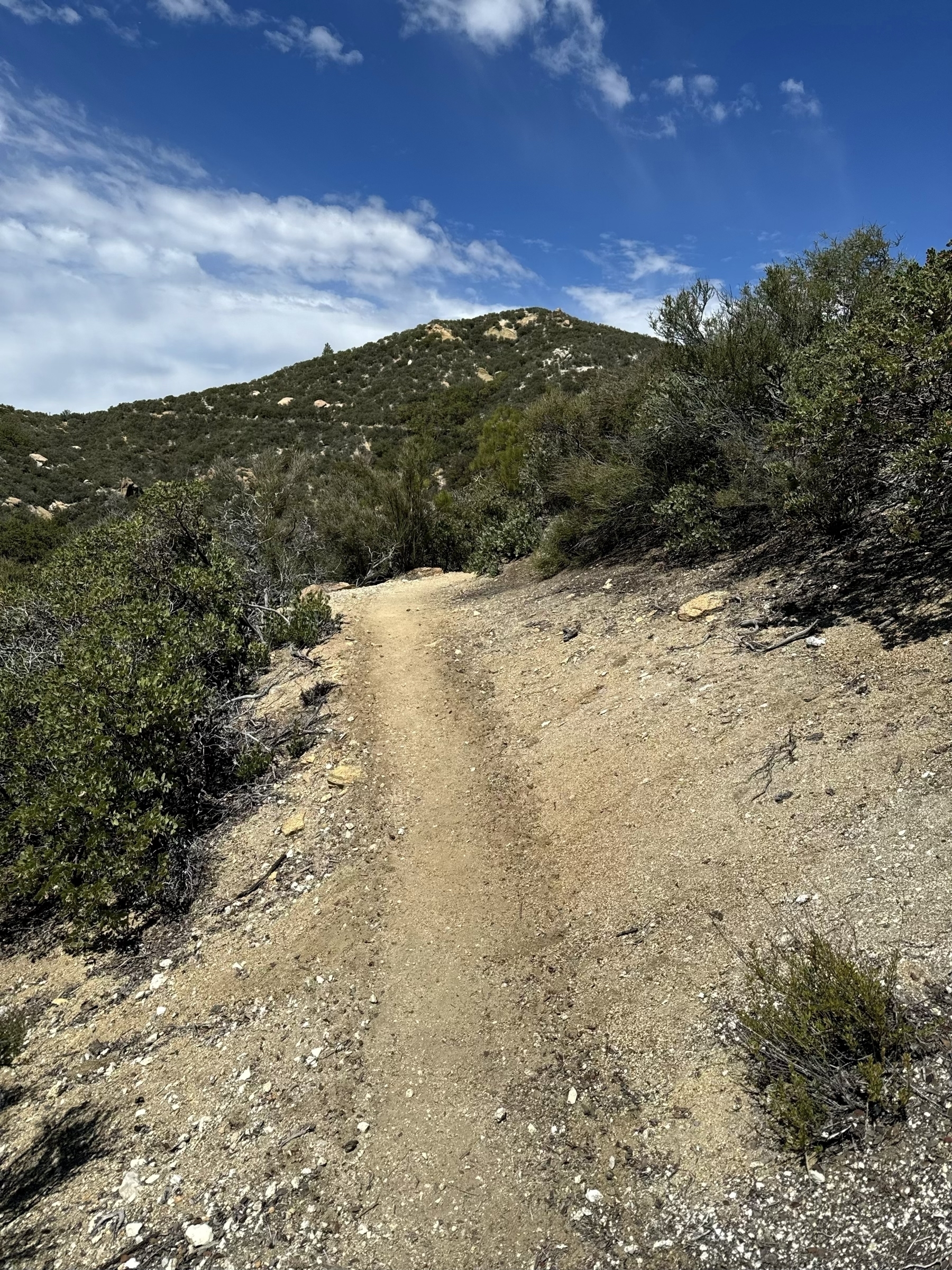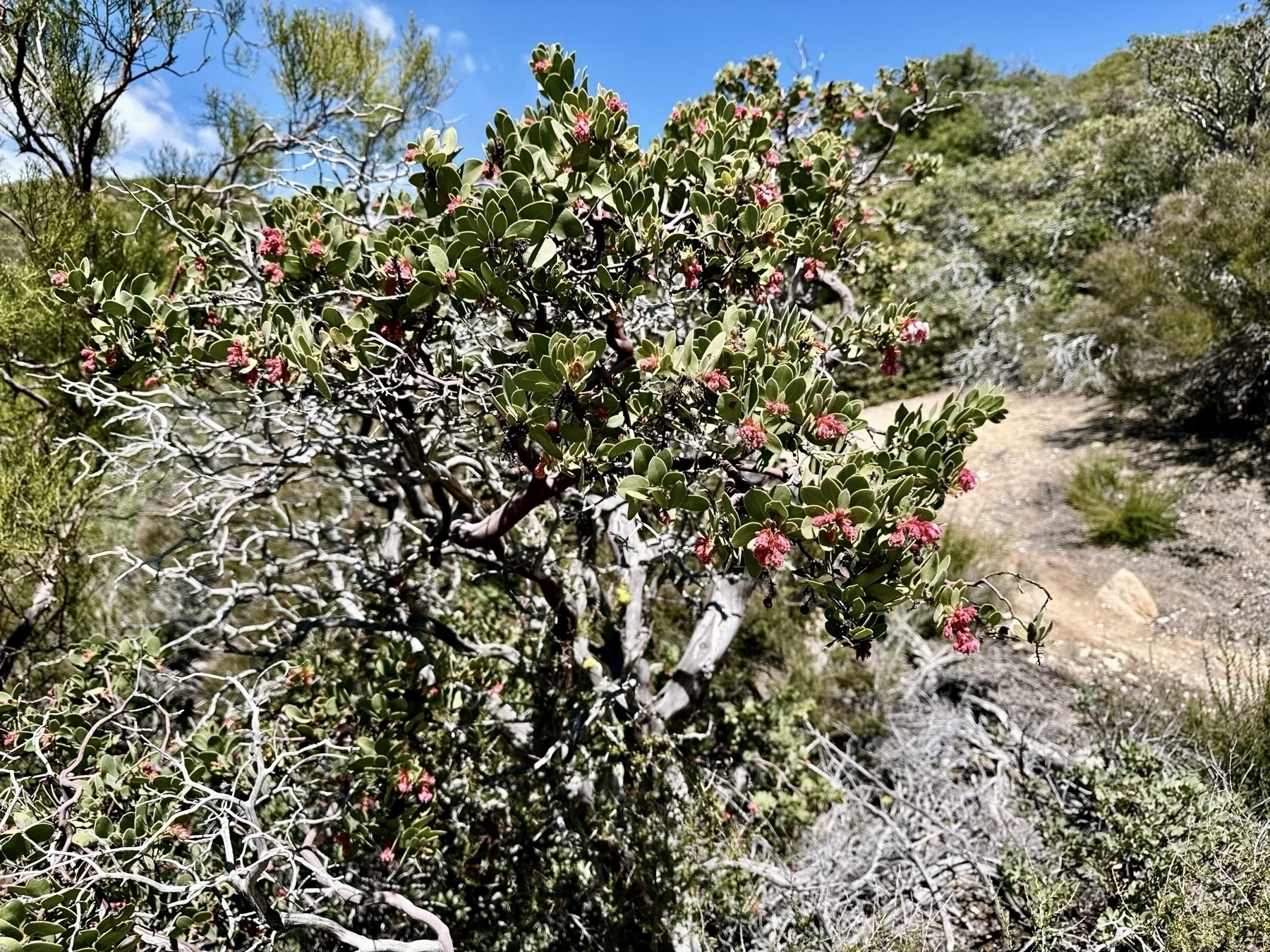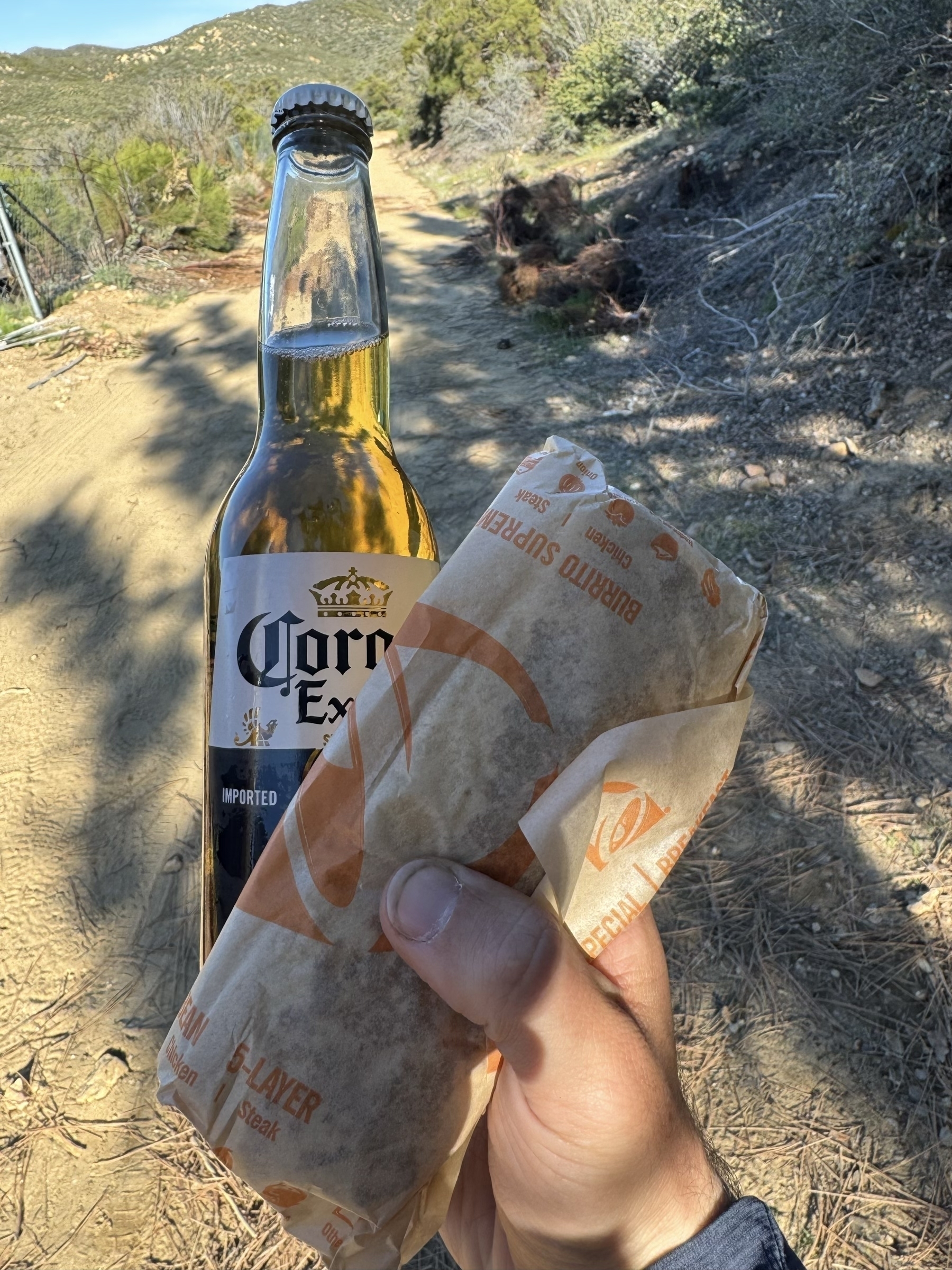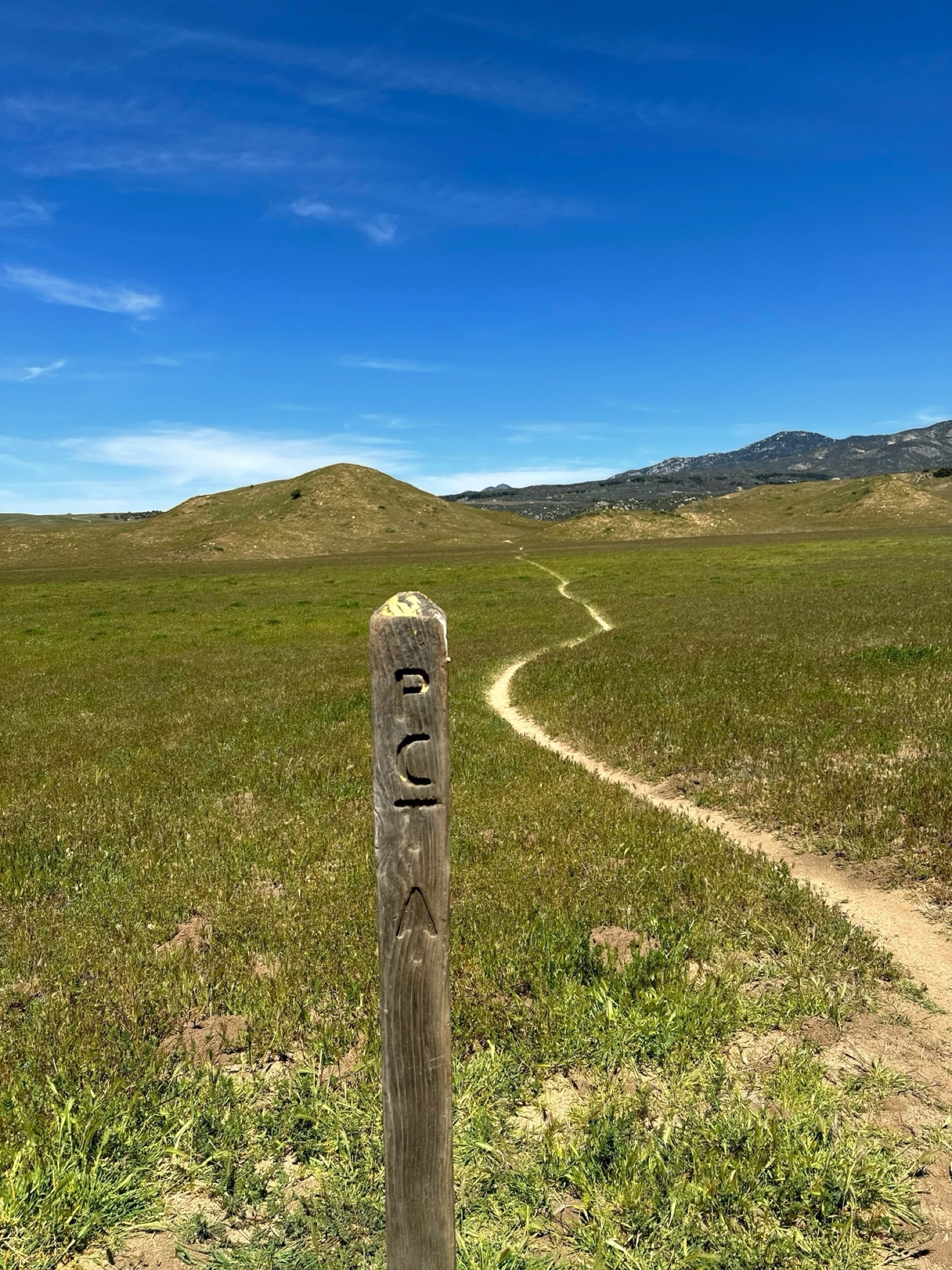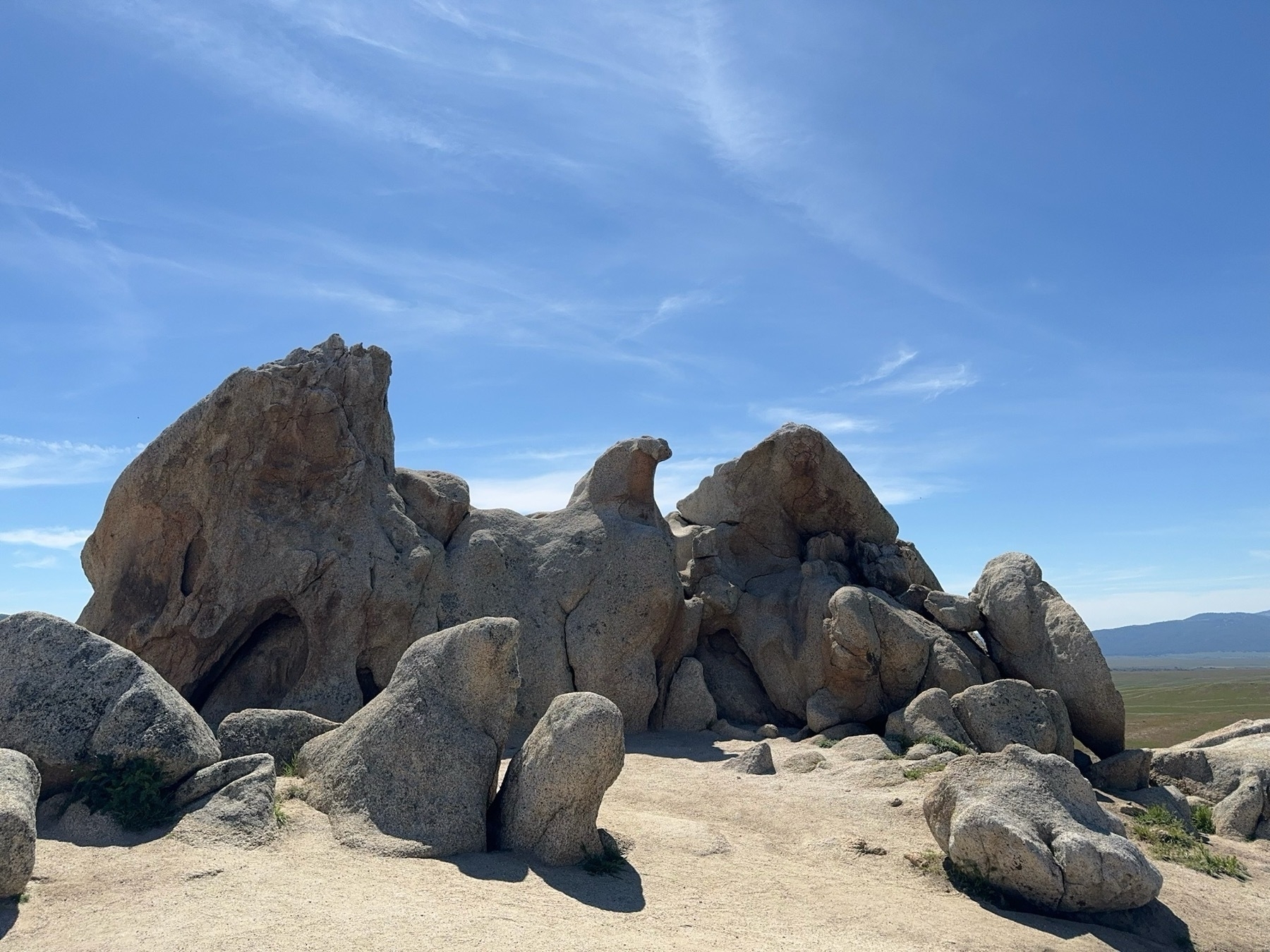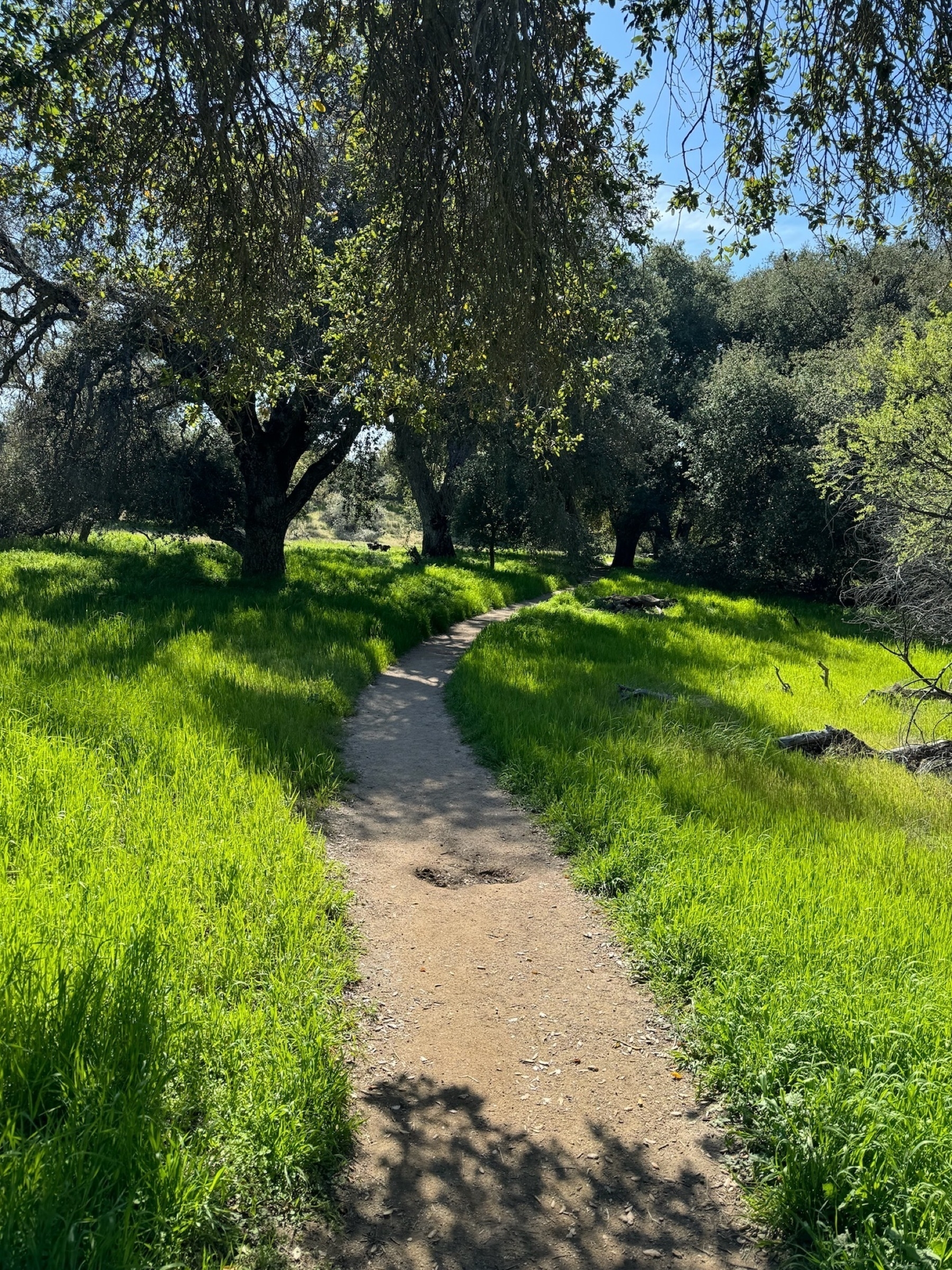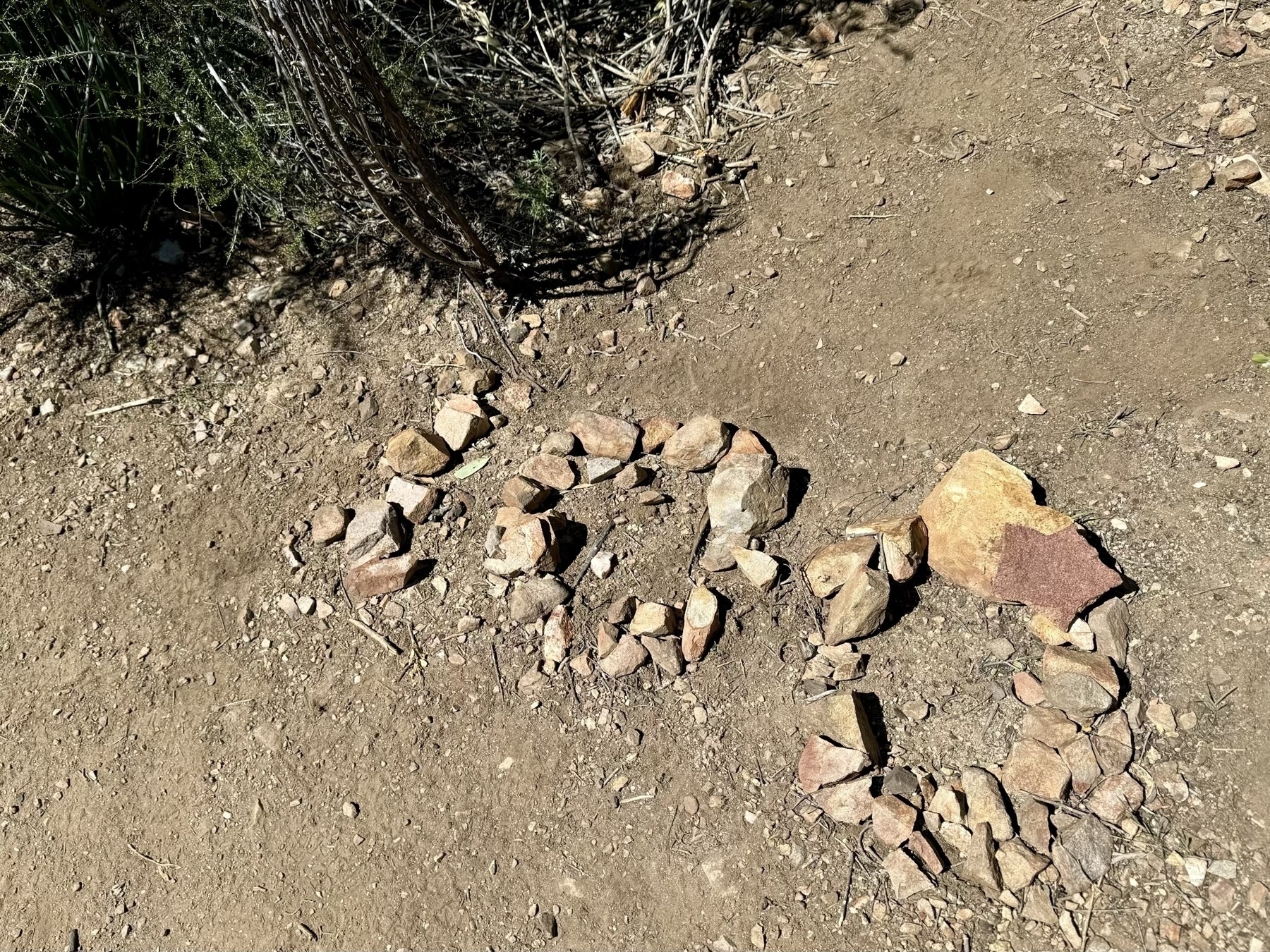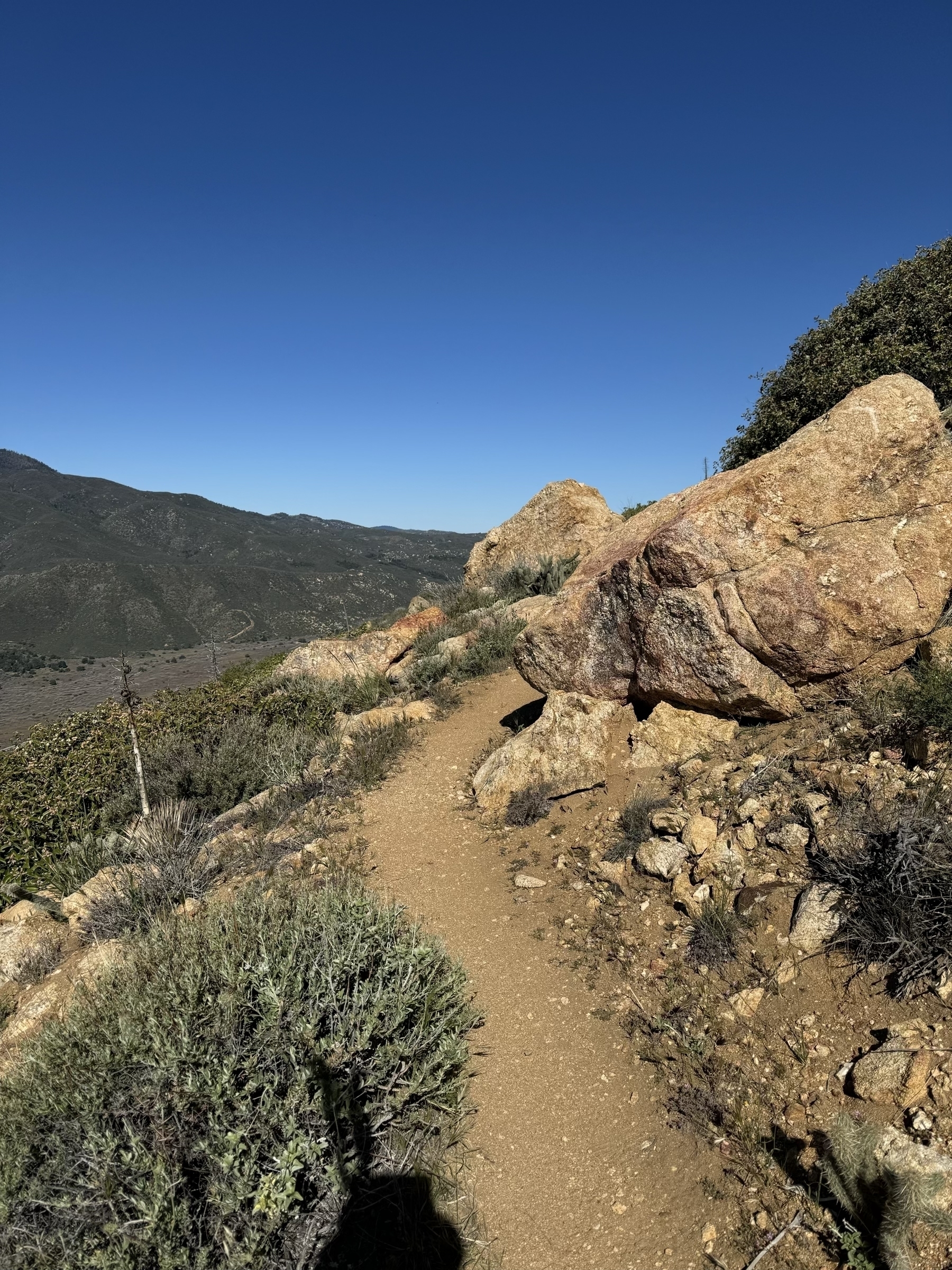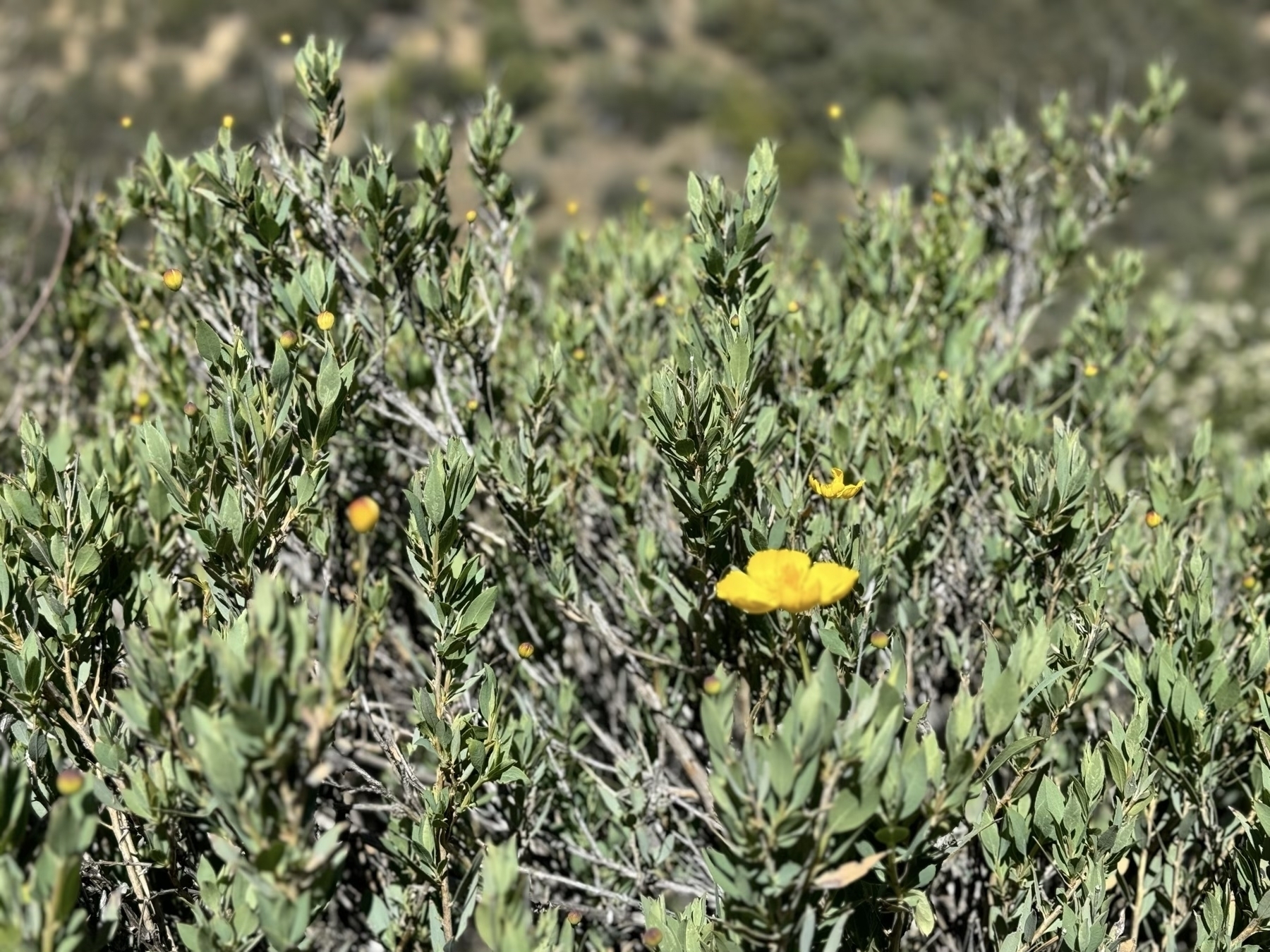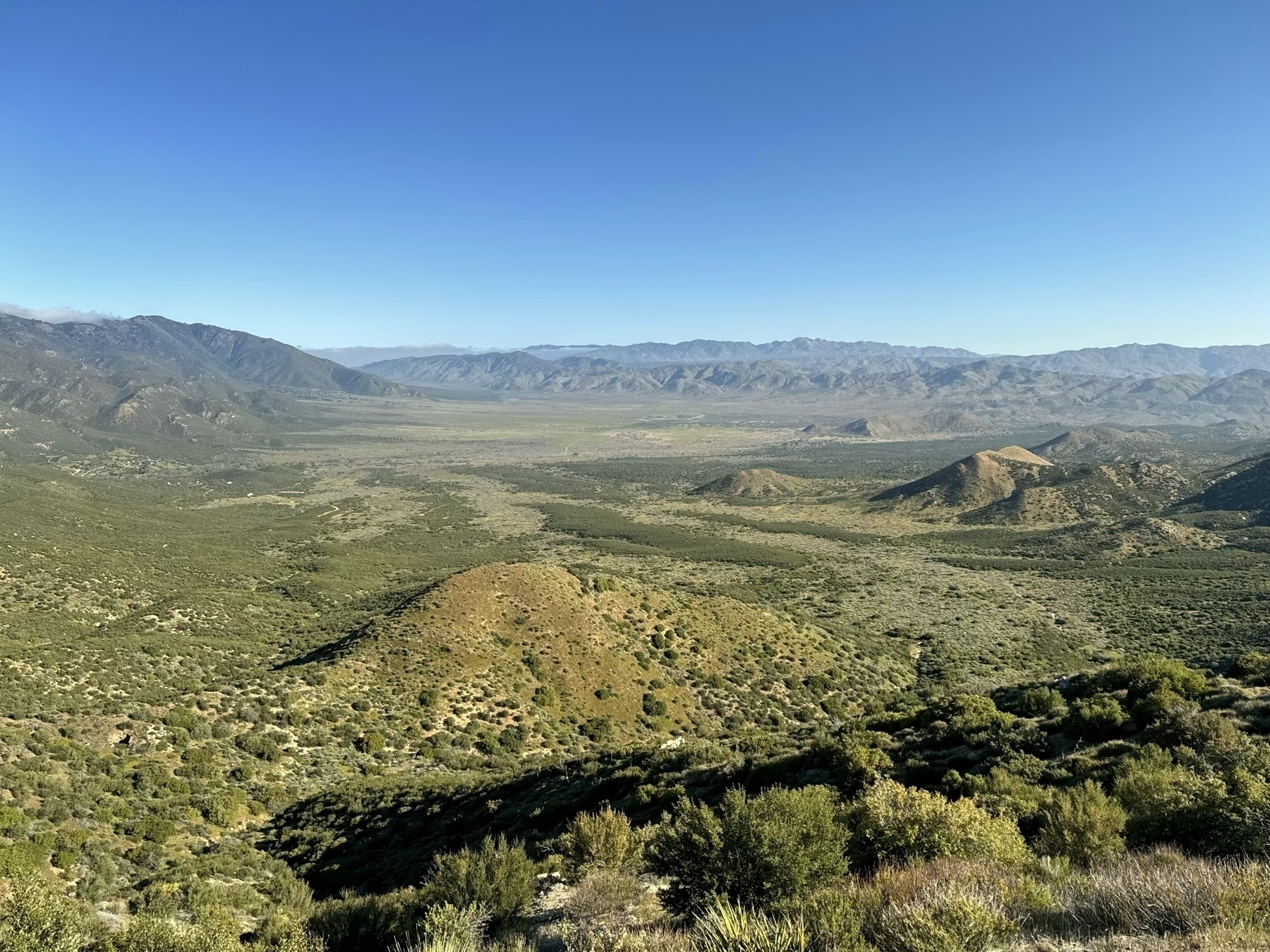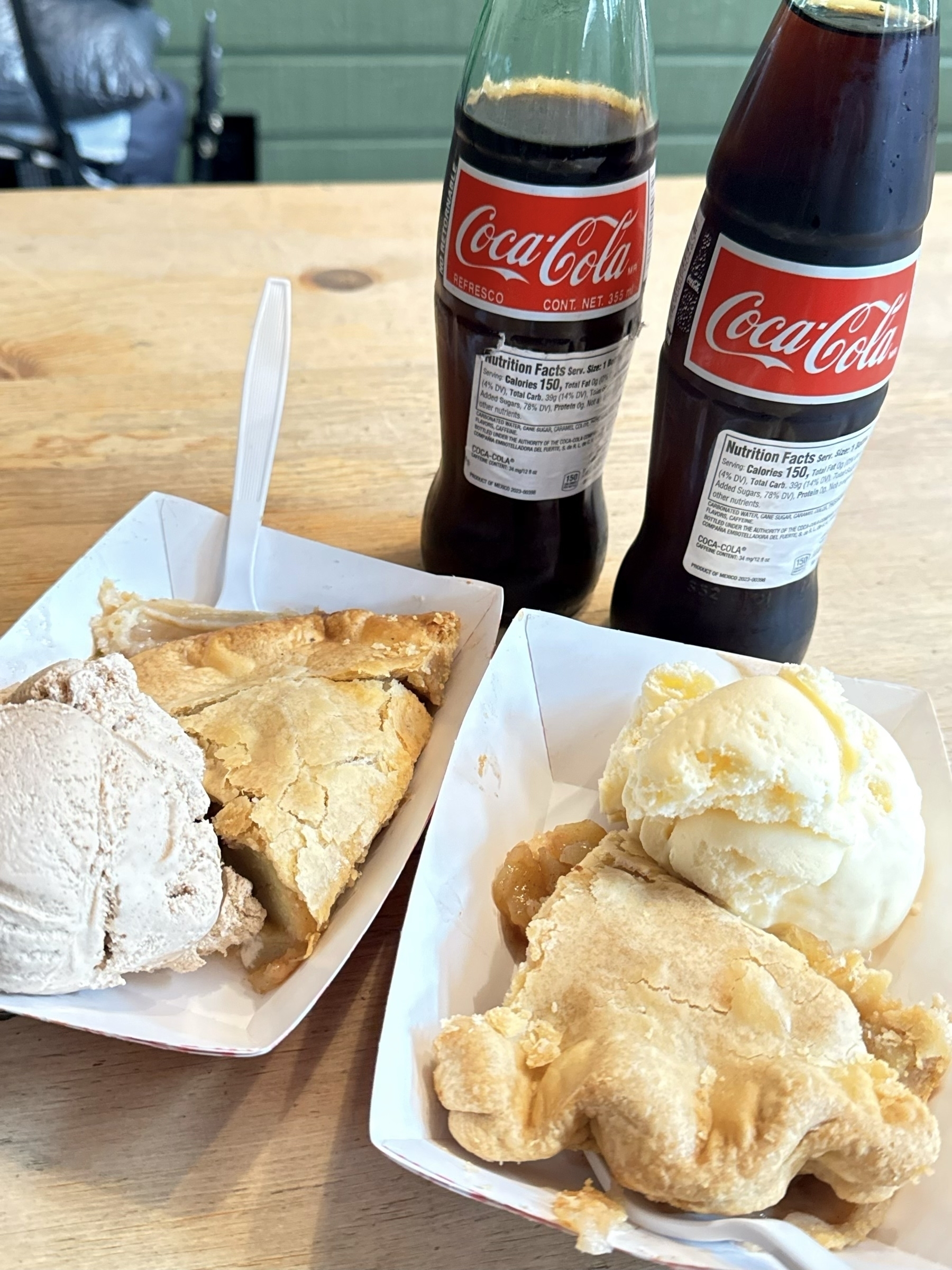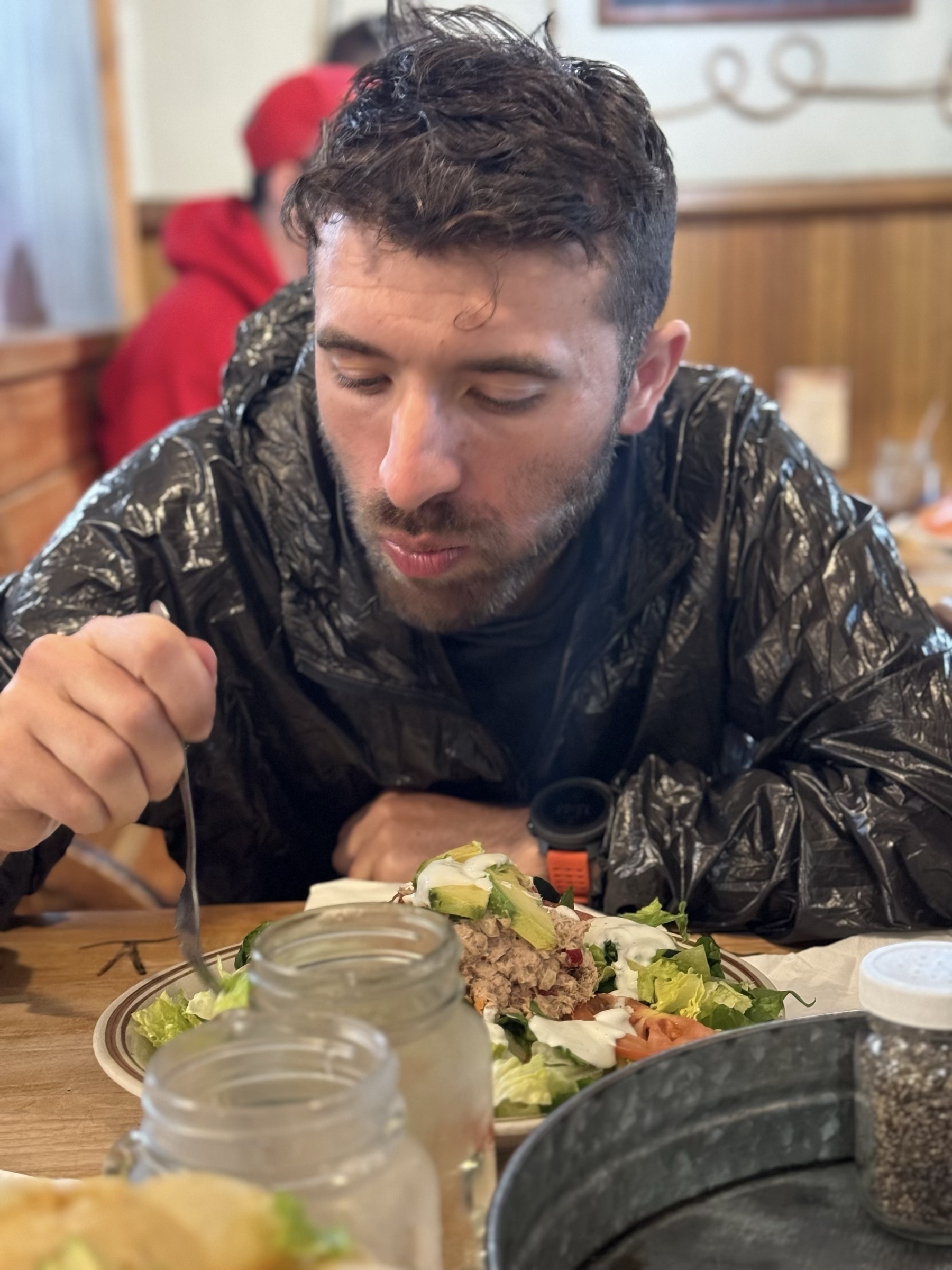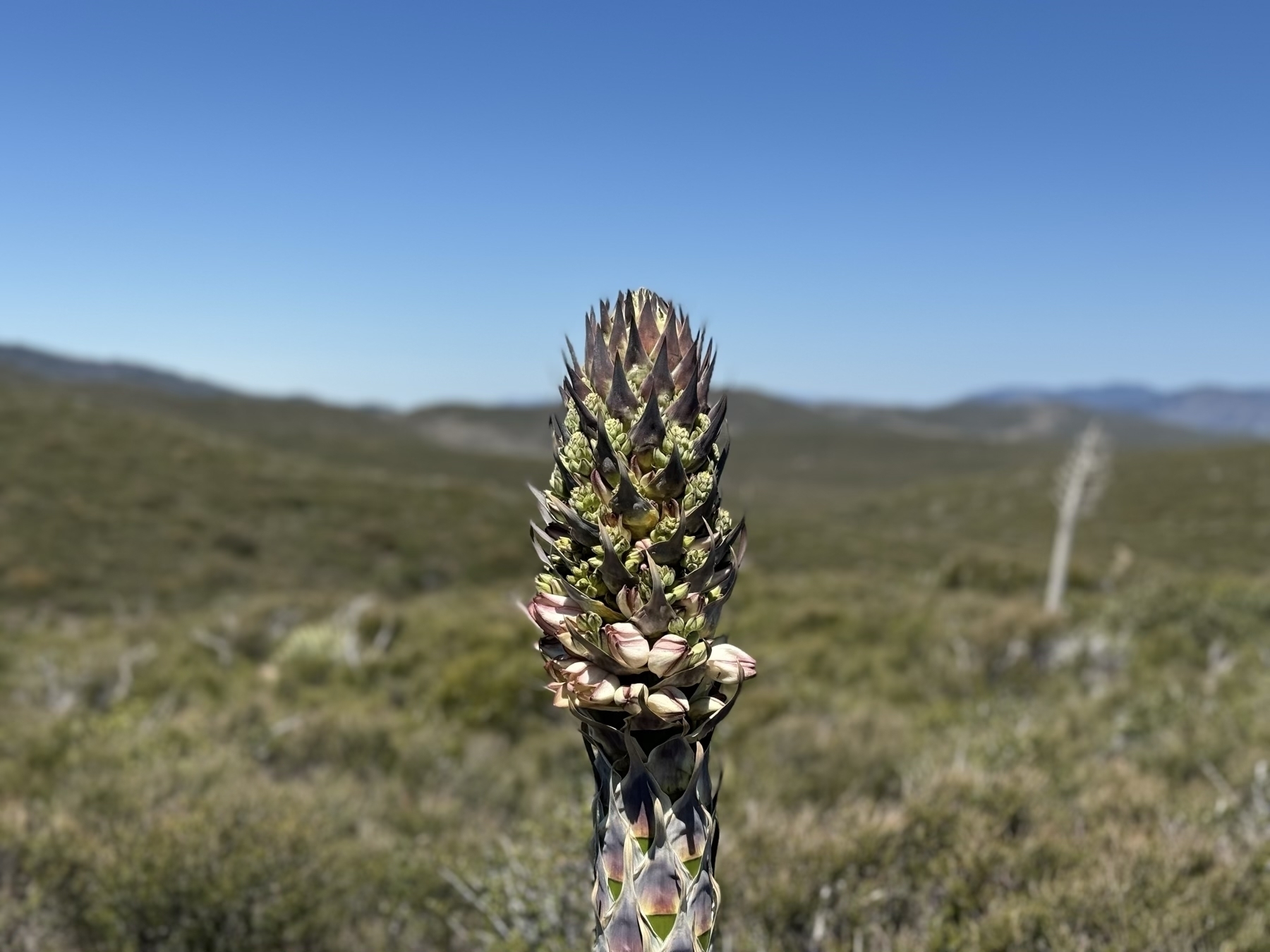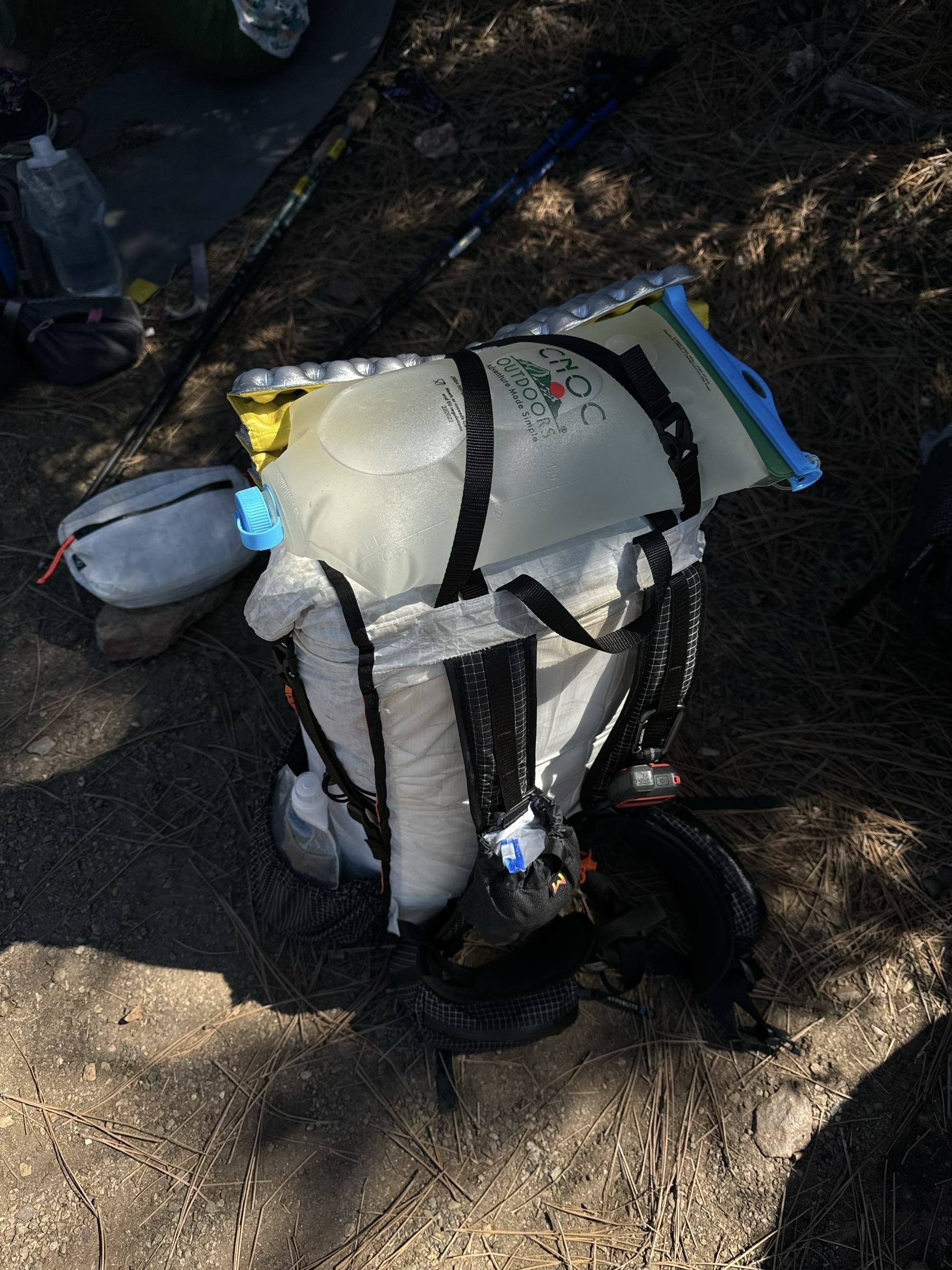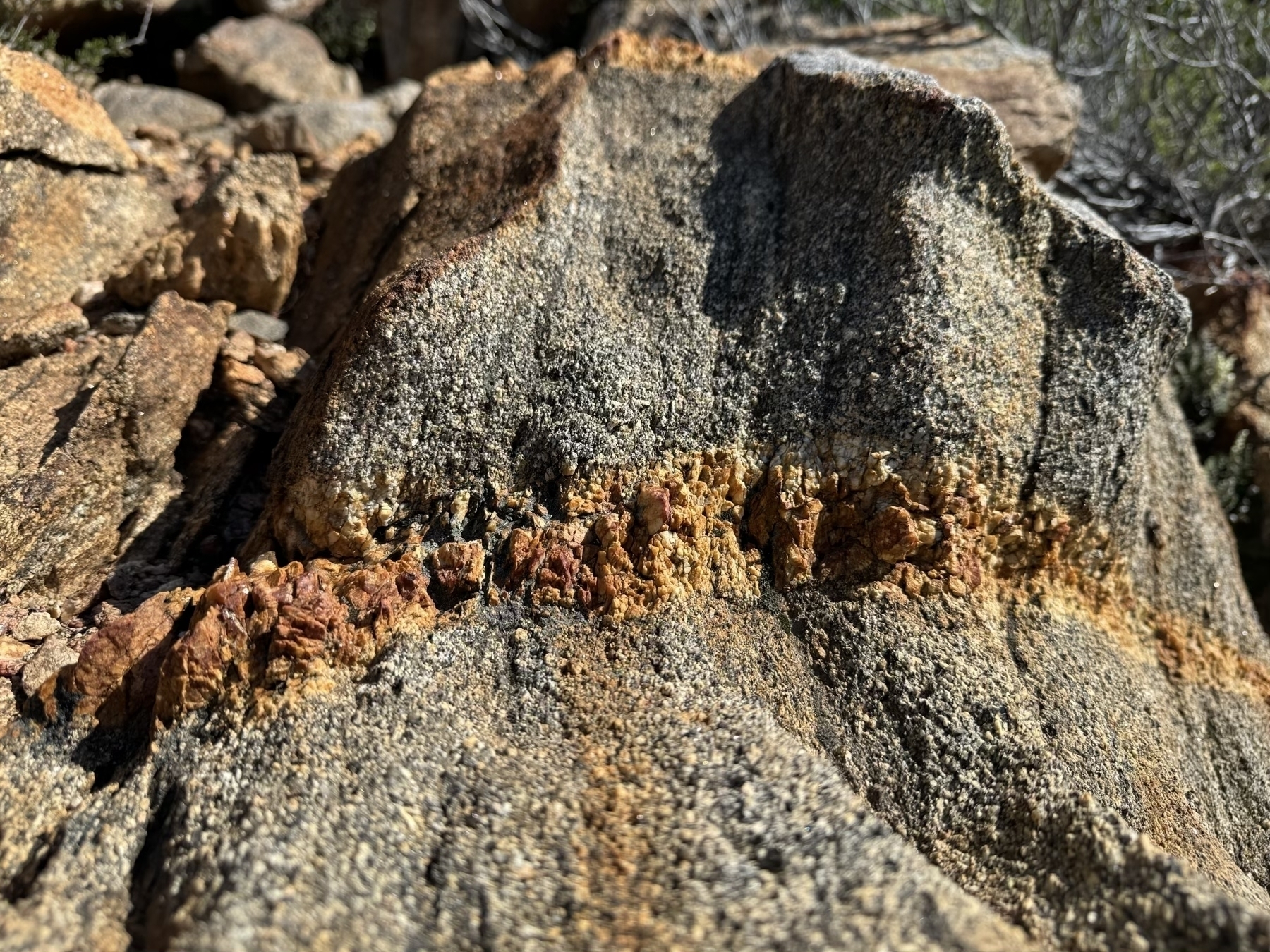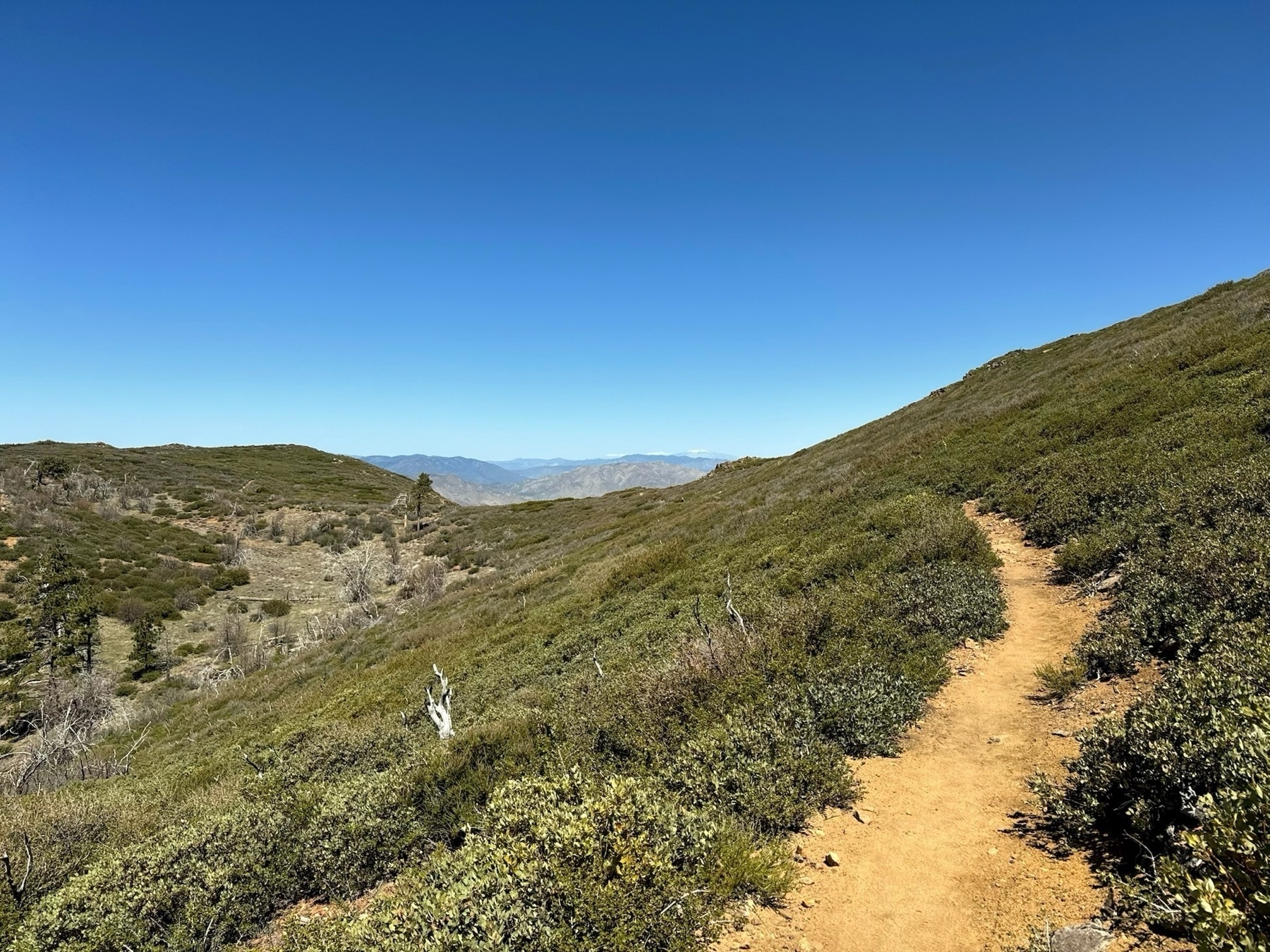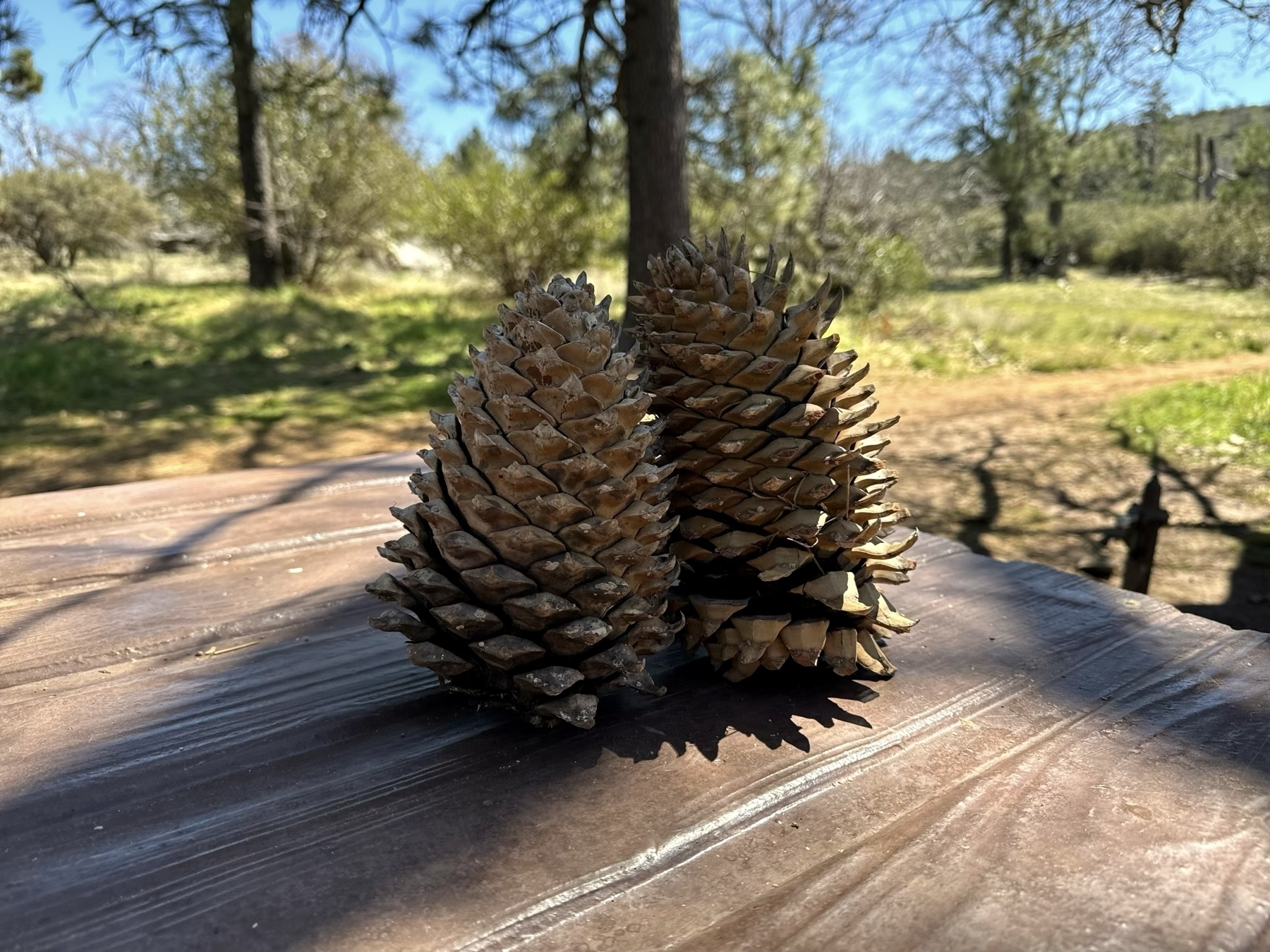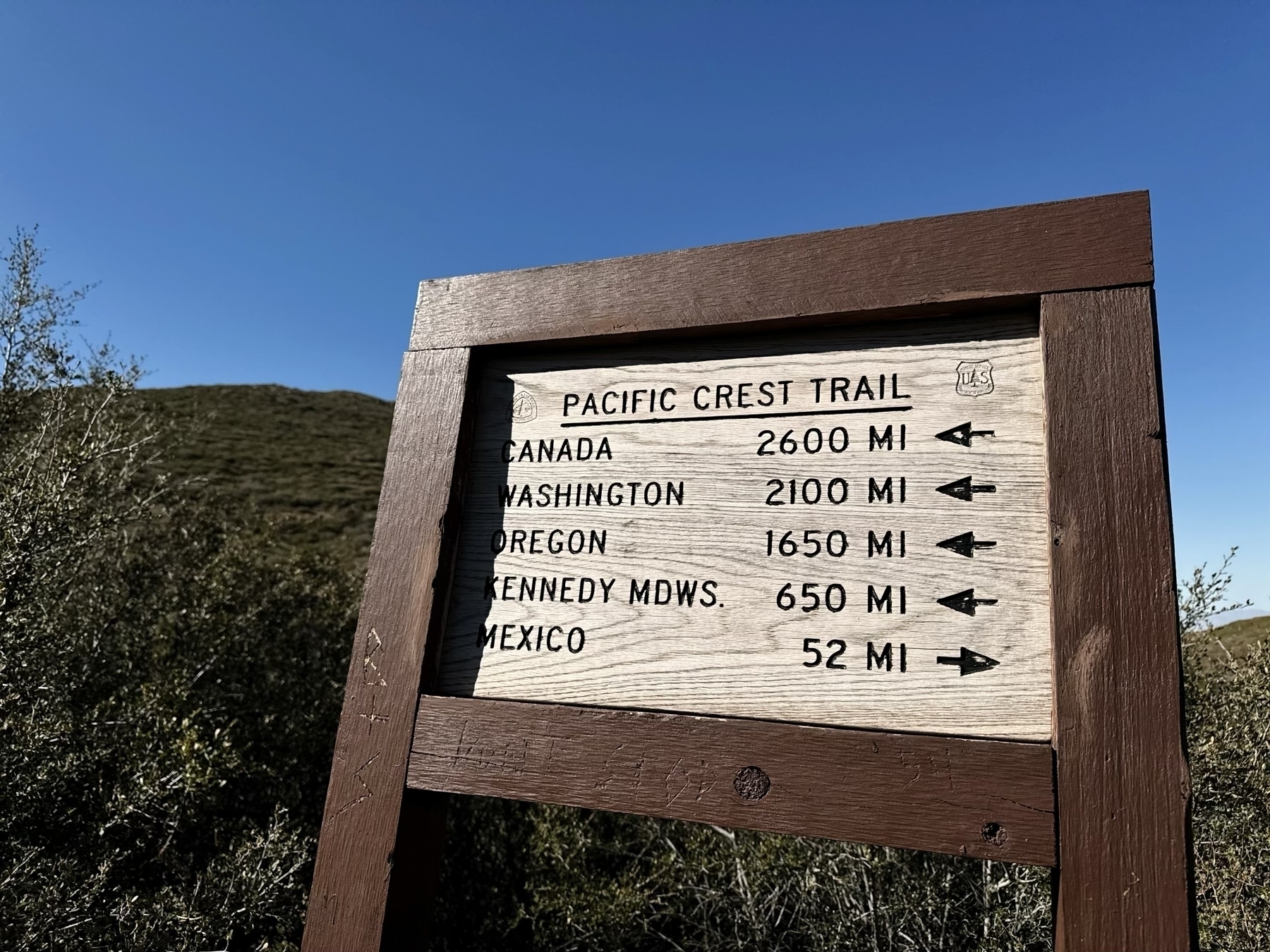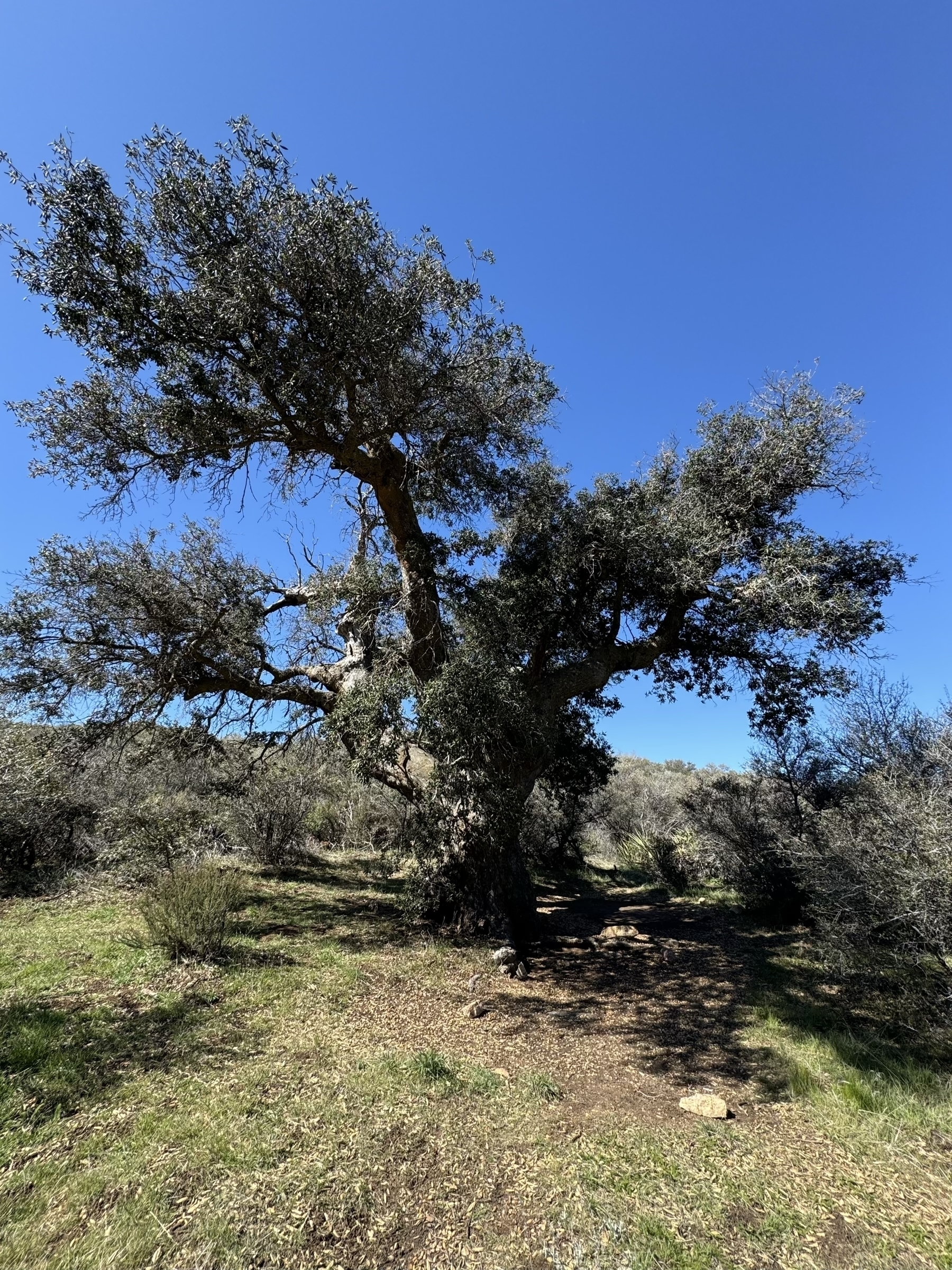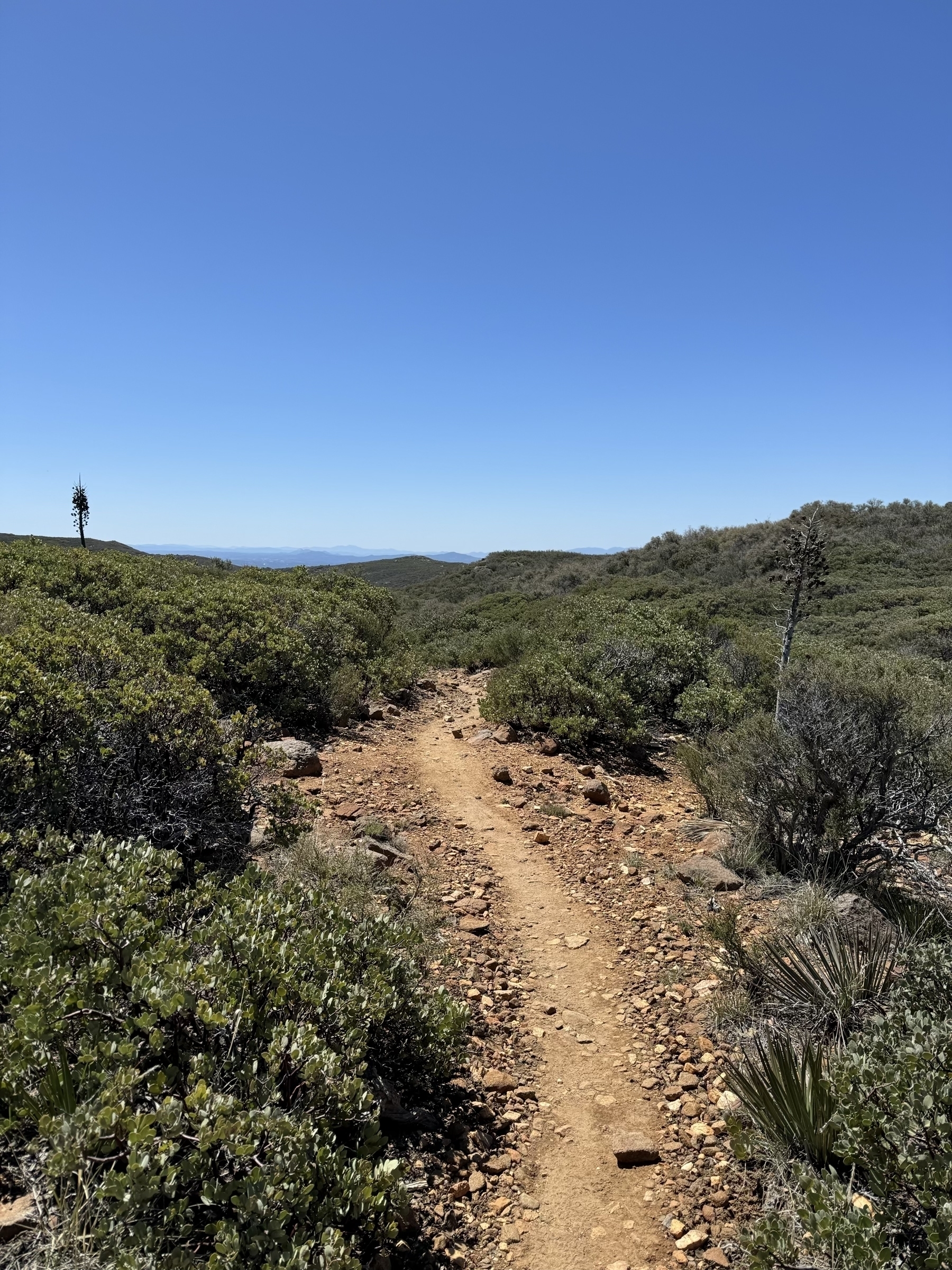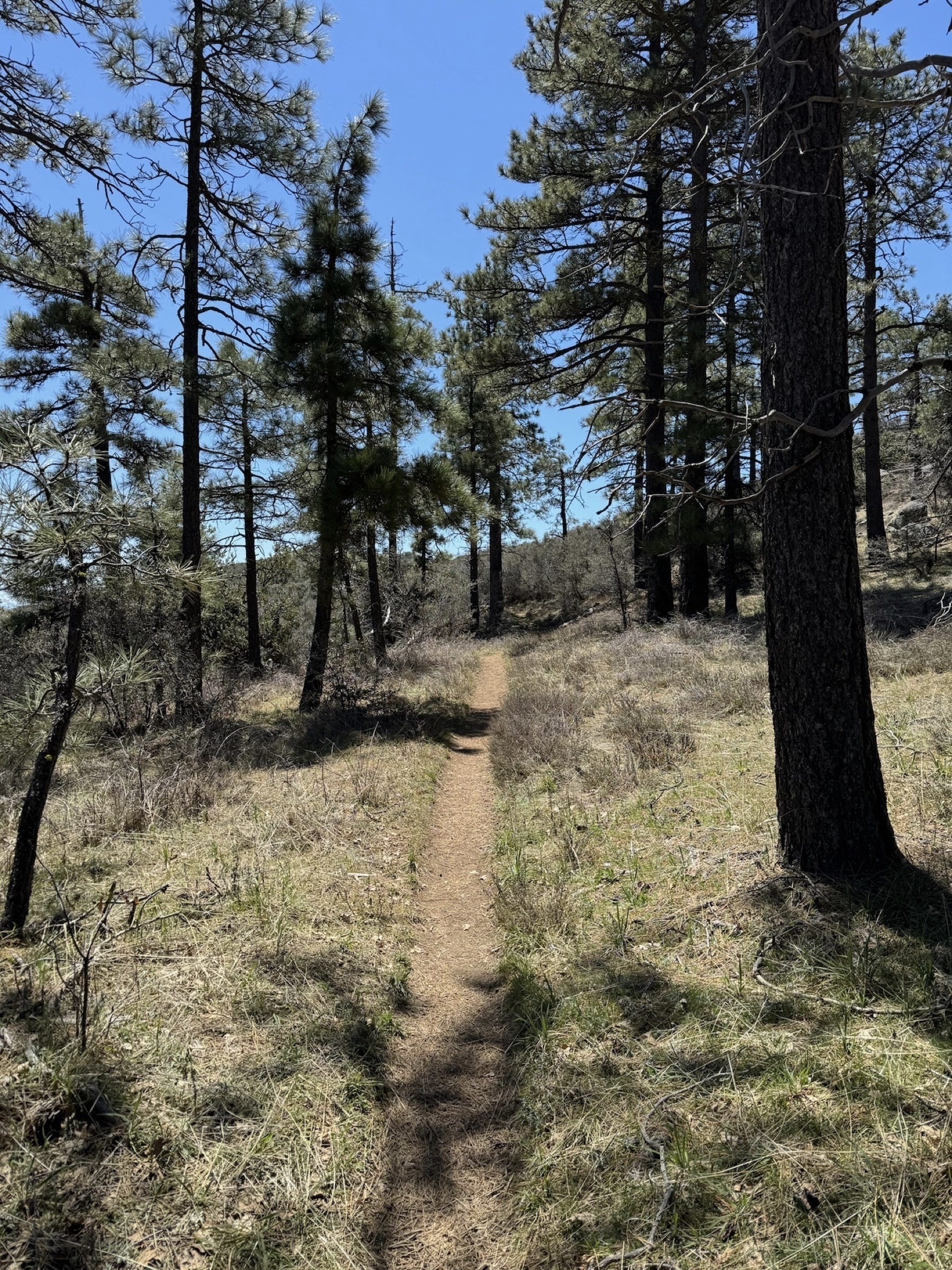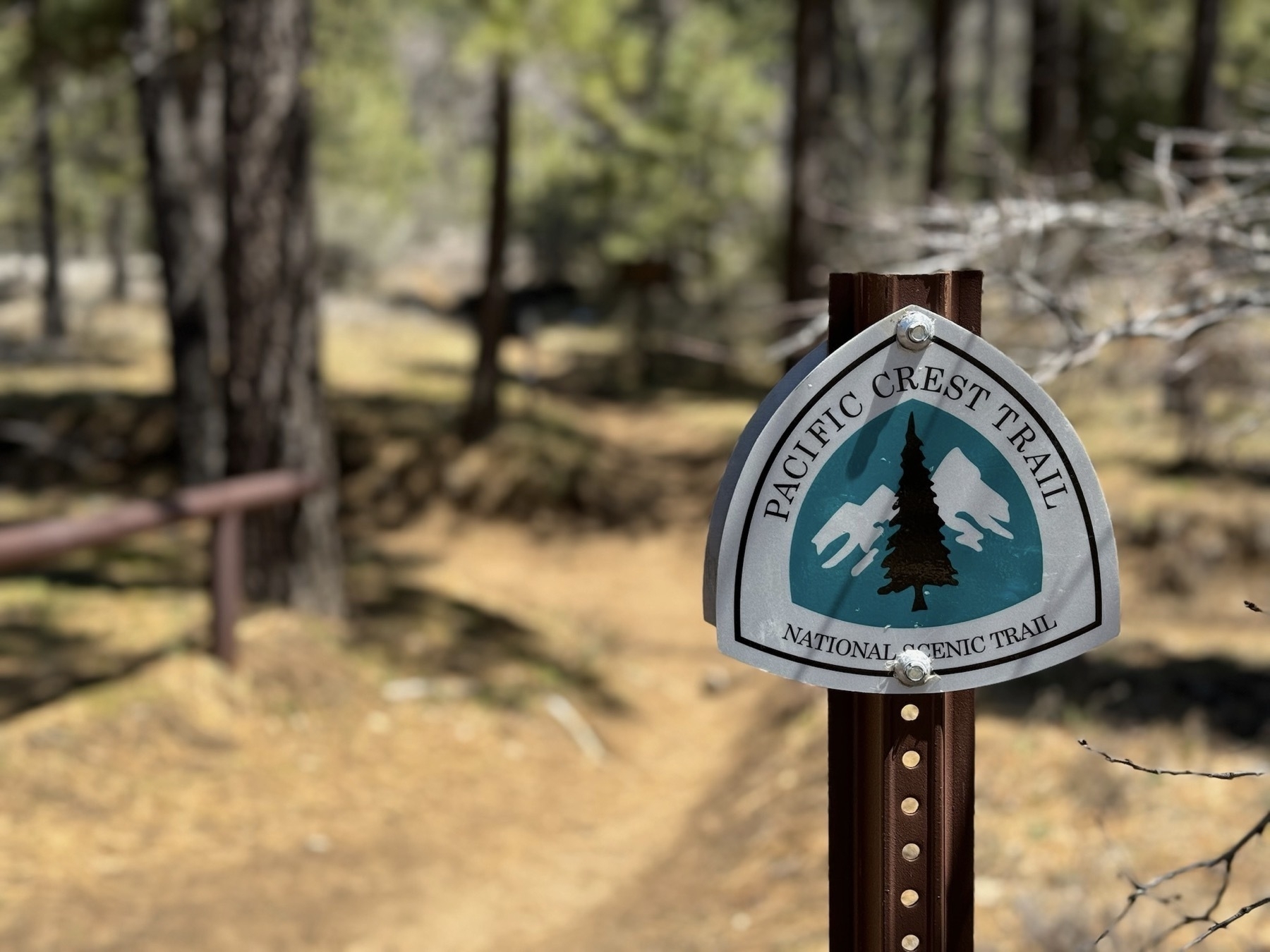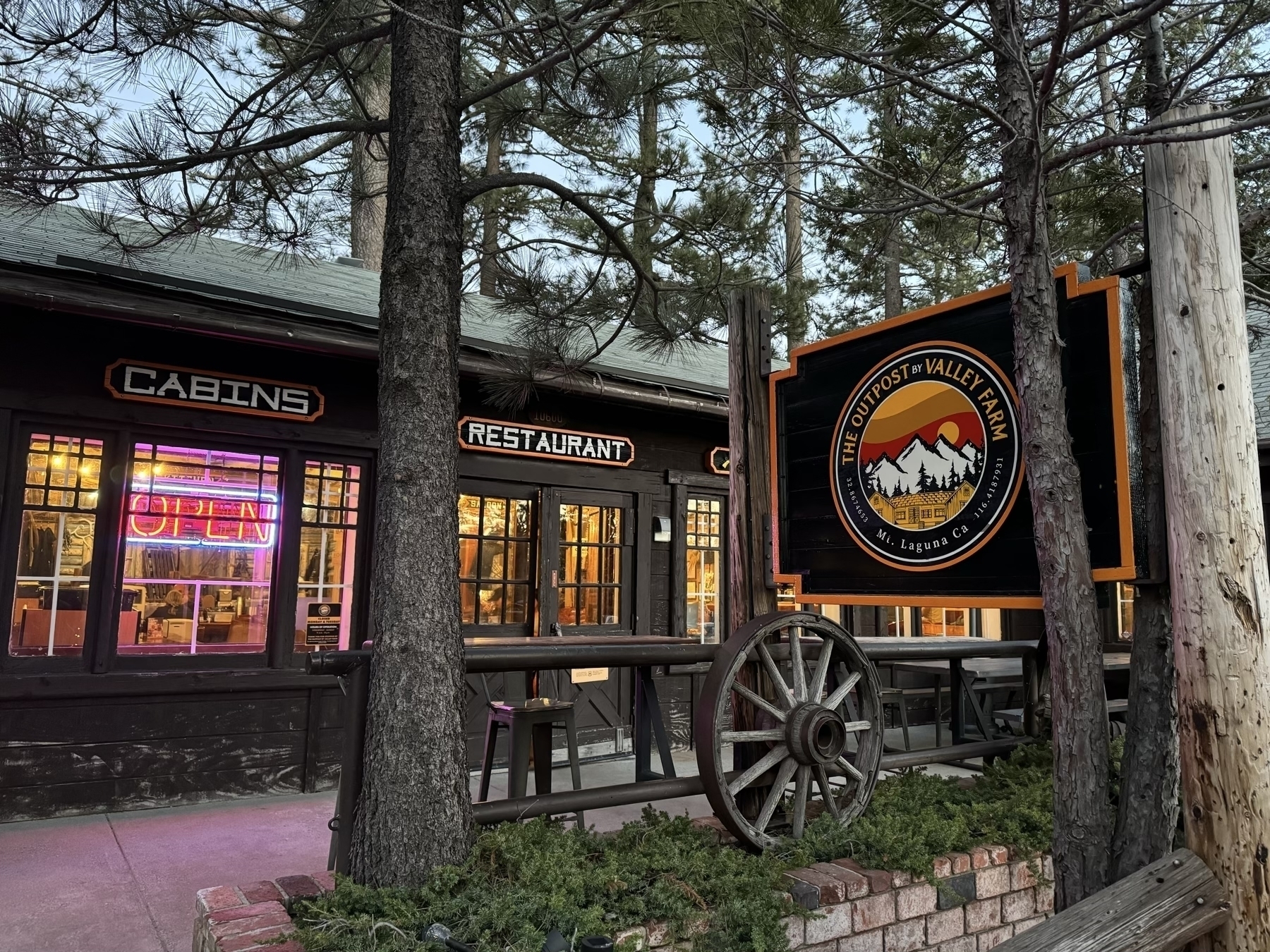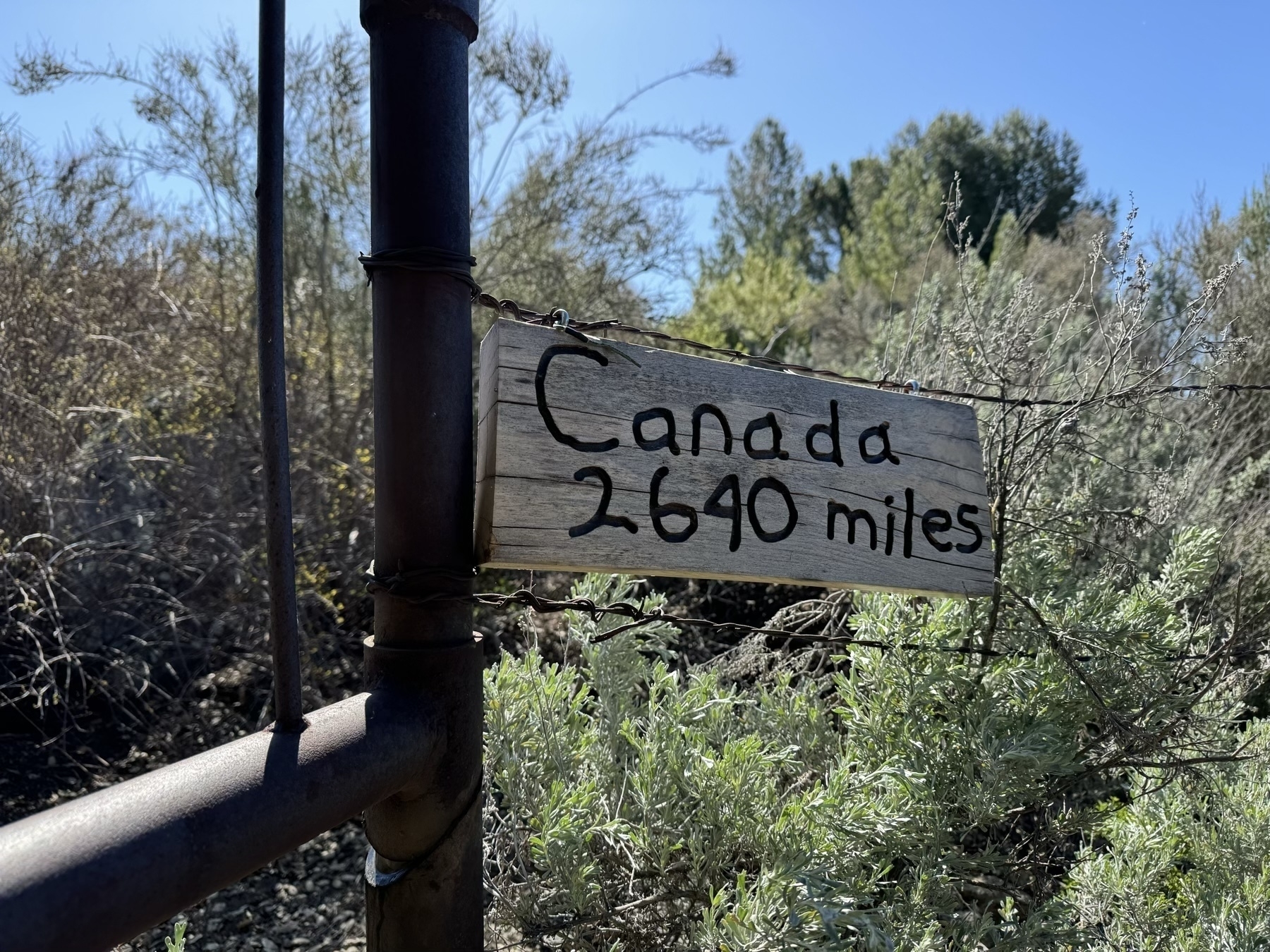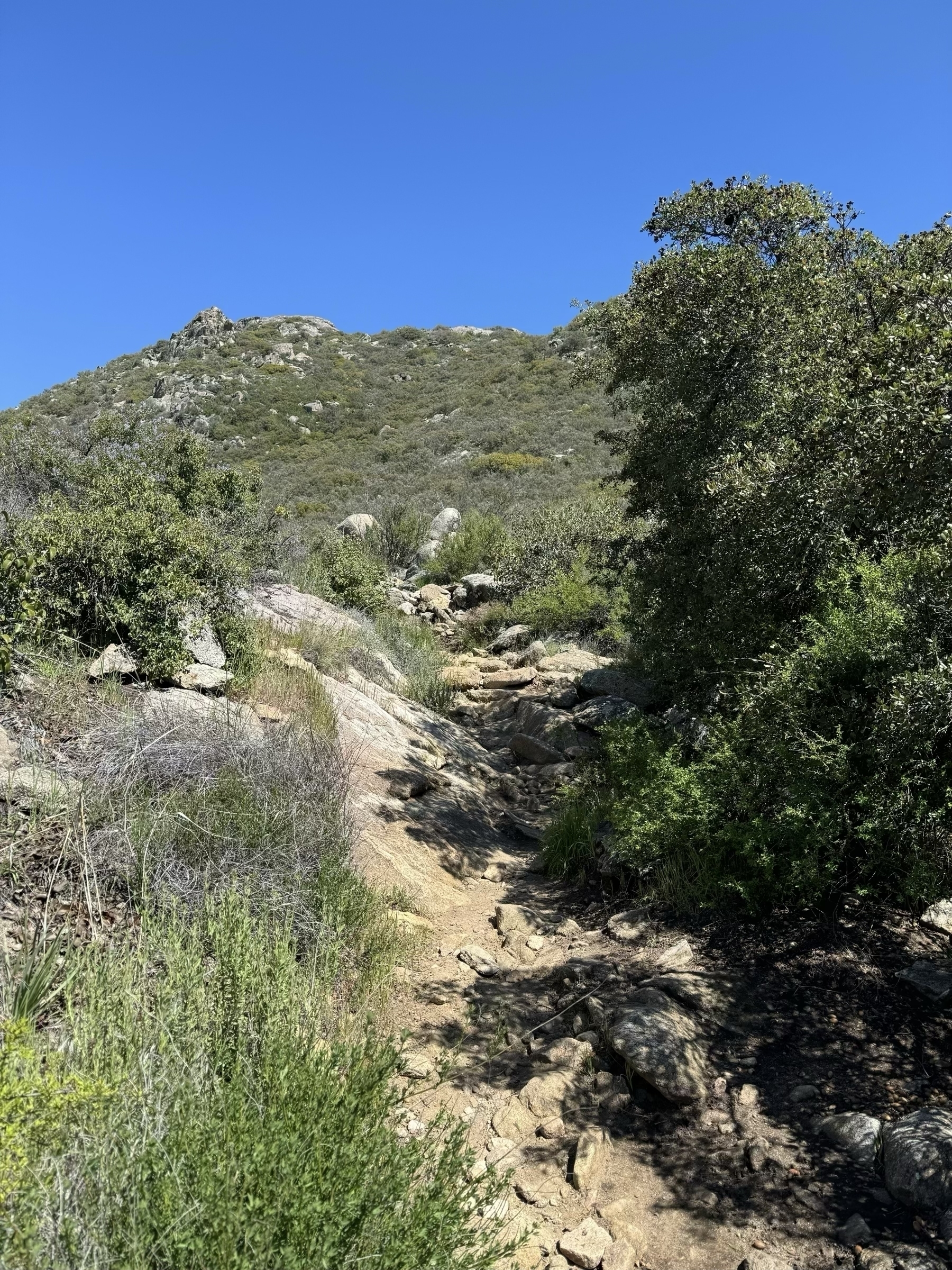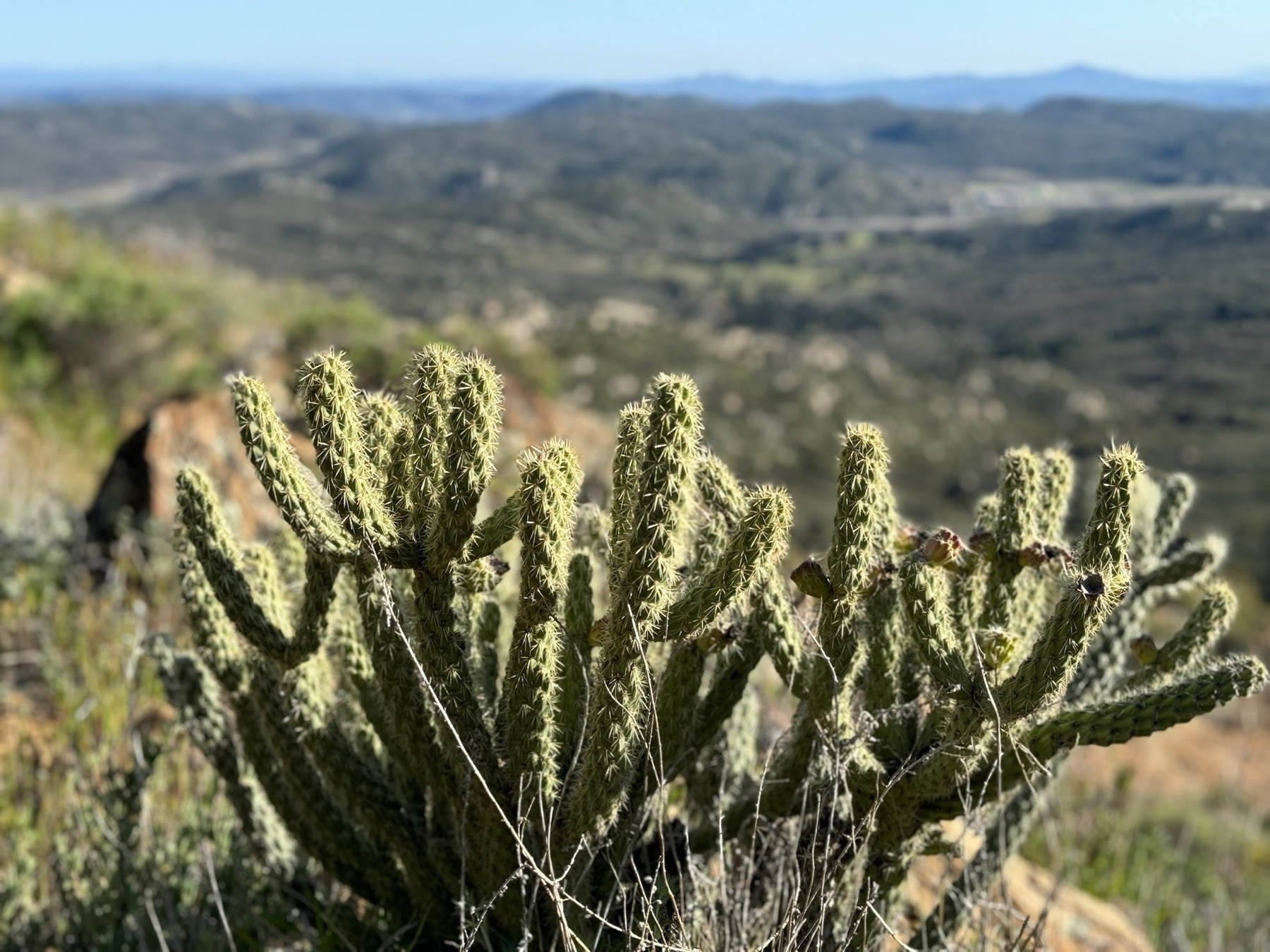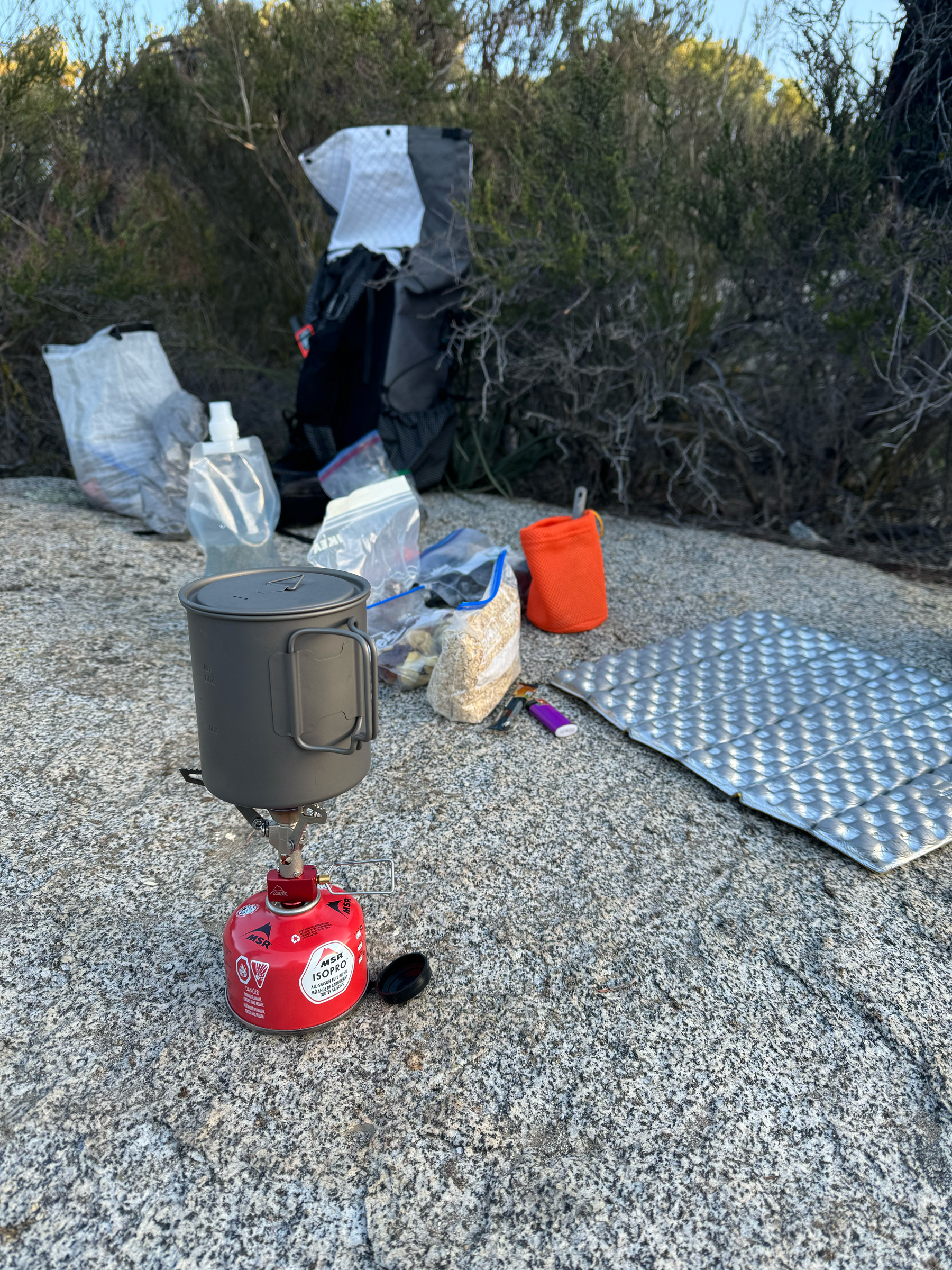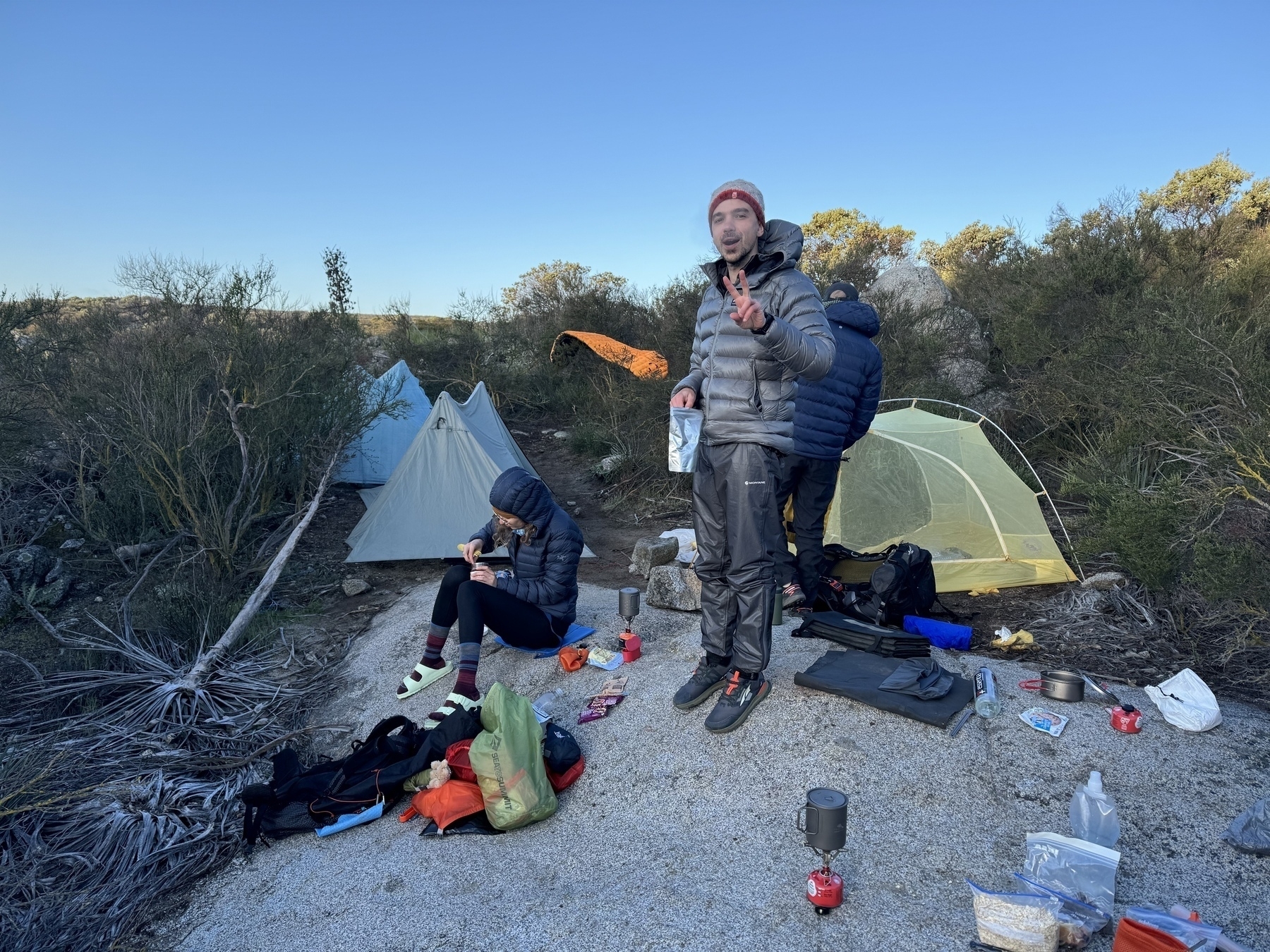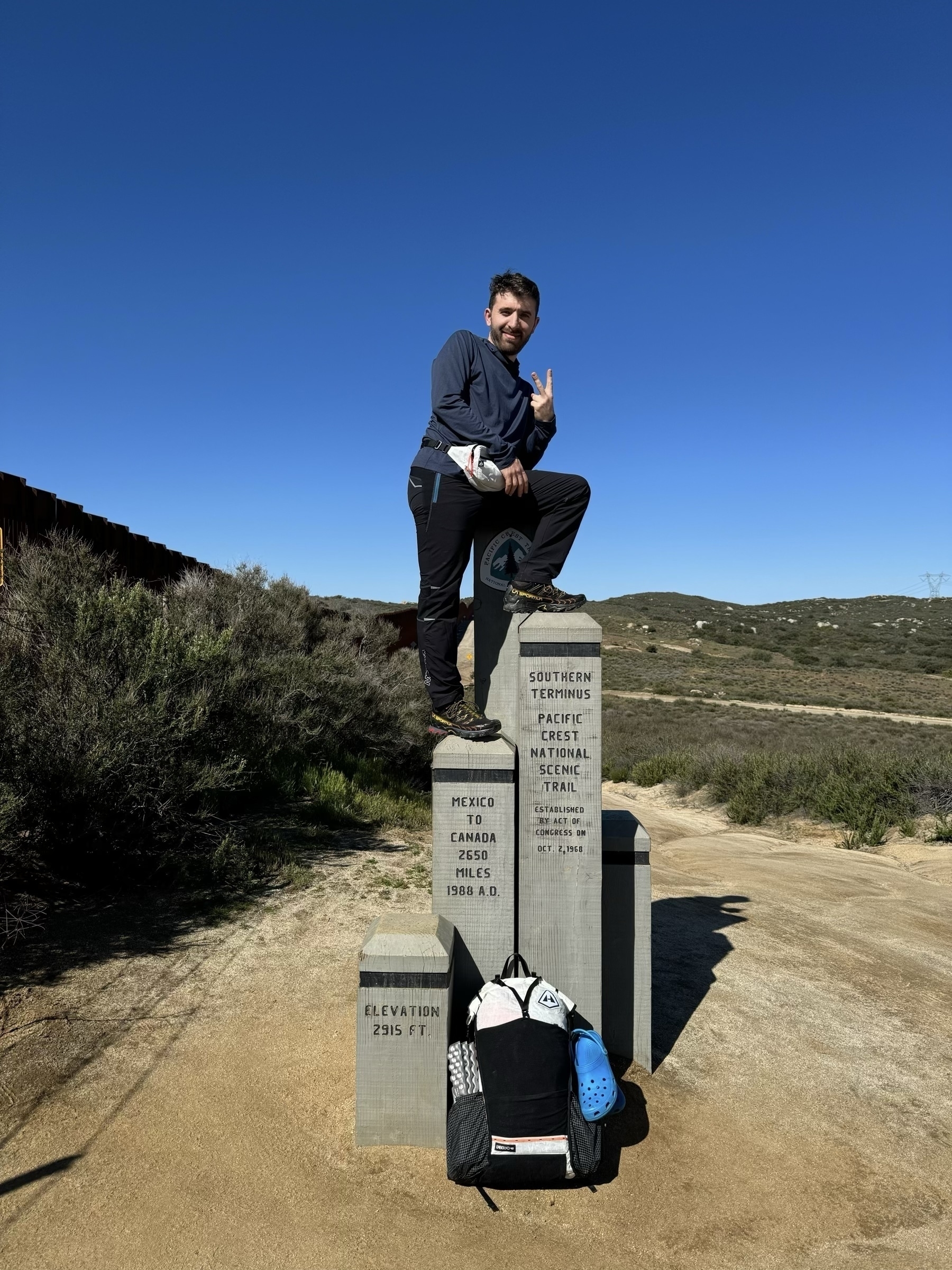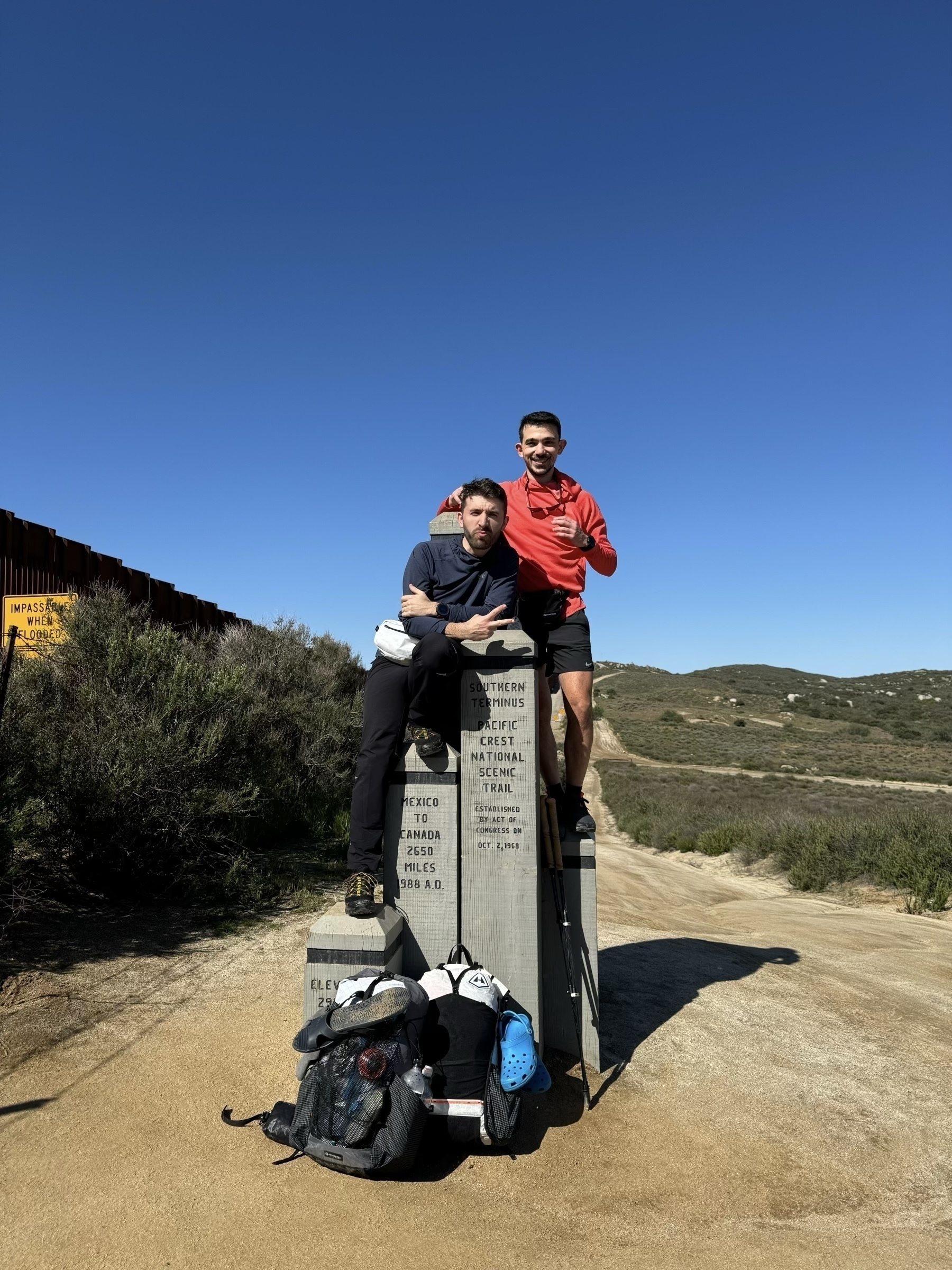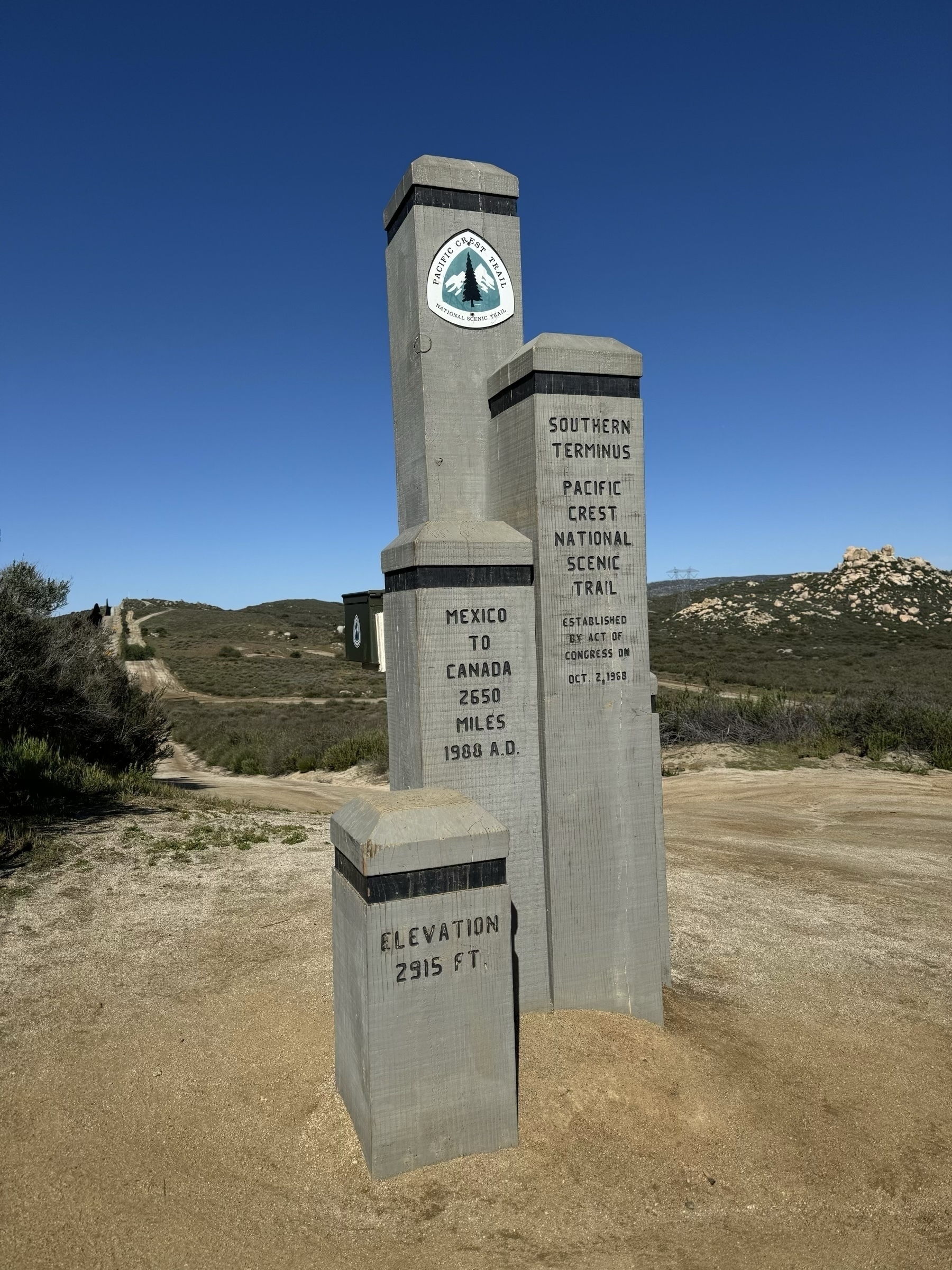Riserve
Quaranta chilometri al Paradise Valley Cafe e quindi all’ingresso a Idyllwild e alla San Jacinto Wilderness Area. Però il numero non dice affatto quali saranno le fatiche che dovremo fare. Prima fra tutte, la solita e la più critica: dove possiamo rifornirci d’acqua? Il deserto non fa sconti e ti costringe a pensare solo a quella. Oggi ho rischiato di fare gli ultimi quattro chilometri e mezzo con un solo litro e una giornata ancora molto calda. Mi sono fermato a prendere un po’ d’acqua a un piccolo rigagnolo – mi sono pentito dopo di non aver scattata una foto – ed è stata una bella iniezione di energia mentale (le gambe erano già a pezzi).
Se c’è una cosa che questa giornata mi ha insegnata è la capacità di saper razionare le proprie risorse: materiali (acqua e cibo), fisiche, e mentali.
Lentamente
Anche oggi ho concluso una giornata da 18 chilometri, nonostante il ginocchio un po’ acciaccato. Ho fatto un consulto con una fisioterapista che mi ha dato un paio di consigli e qualche esercizio di stretching/mobilità da fare: ne ho fatti un paio al pit-stop delle cinque, ma da domani devo mettermi seriamente d’impegno altrimenti non ne verrò fuori.
È difficile non farsi trascinare dal gruppo. Vogliamo arrivare a tutti i costi insieme a qualcuno, per farci una specie di compagnia a distanza, basta che le nostre tende siano vicine. Un po’ di calore umano.
Devo riuscire ad arrivare al Paradise Valley entro domenica, perché è il più lungo stretch che posso fare con il cibo che ho con me. Però non devo strafare, devo tenere il mio ritmo lento ma costante. Domani ci sarà un po’ più di salita, mentre oggi avremo fatto al massimo 400 metri in tutta la giornata. E salite e discese sono le più toste per il mio ginocchio. Ma ce la posso fare. Ce la devo fare. Non è questo il giorno in cui mi arrendo.
I regali del centesimo miglio
Primo traguardo ufficiale, cioè marcato sul sentiero: le cento miglia (160 km, poco più di metà del pezzo del Cammino di Santiago e due volte la Translagorai).
Ahimè, non posso dire che sia stata una buona giornata: mi è comparsa la prima vescica sul tallone del piede destro – a me le vesciche ai piedi non vengono mai – e, ancora peggio, è saltato fuori un dolore muscolare o tendineo al ginocchio sinistro: nel 2022 fu il turno del destro, ora facciamo cambio. Non posso dire che sia lo stesso problema – alla fine non so neppure dire quale sia stato il problema nel 2022 – ma mi preoccupa assai: è un dolore acuto e difficile da sopportare, soprattutto le salite discese più impervie. Io penso sia un caso di overuse, cioè ho spinto troppo nei giorni precedenti e ora devo riposare. Ma se dovesse essere proprio come l’altro ginocchio, allora non avrei troppe chance di proseguire perché mi servirebbero dei mesi per recuperare. Domani mattina sono riuscito a prendere un appuntamento con una fisioterapista “itinerante” che si prende cura di questi problemi degli hiker durante la stagione. Sono un po’ scettico perché sarà un appuntamento online, ma è il massimo che posso fare adesso. Una delle paure più grandi che avevo alla partenza si è concretizzata; ora devo trovare il modo migliore per reagire. Qual è la cosa peggiore che potrei dover gestire?
Bye bye Julian! 👋 🍔🍺 Food, rest, some very friendly encounters. Albeit with a little muscle soreness left, we feel we fully recharged our batteries. The next real town is going to be Idyllwild 🌳
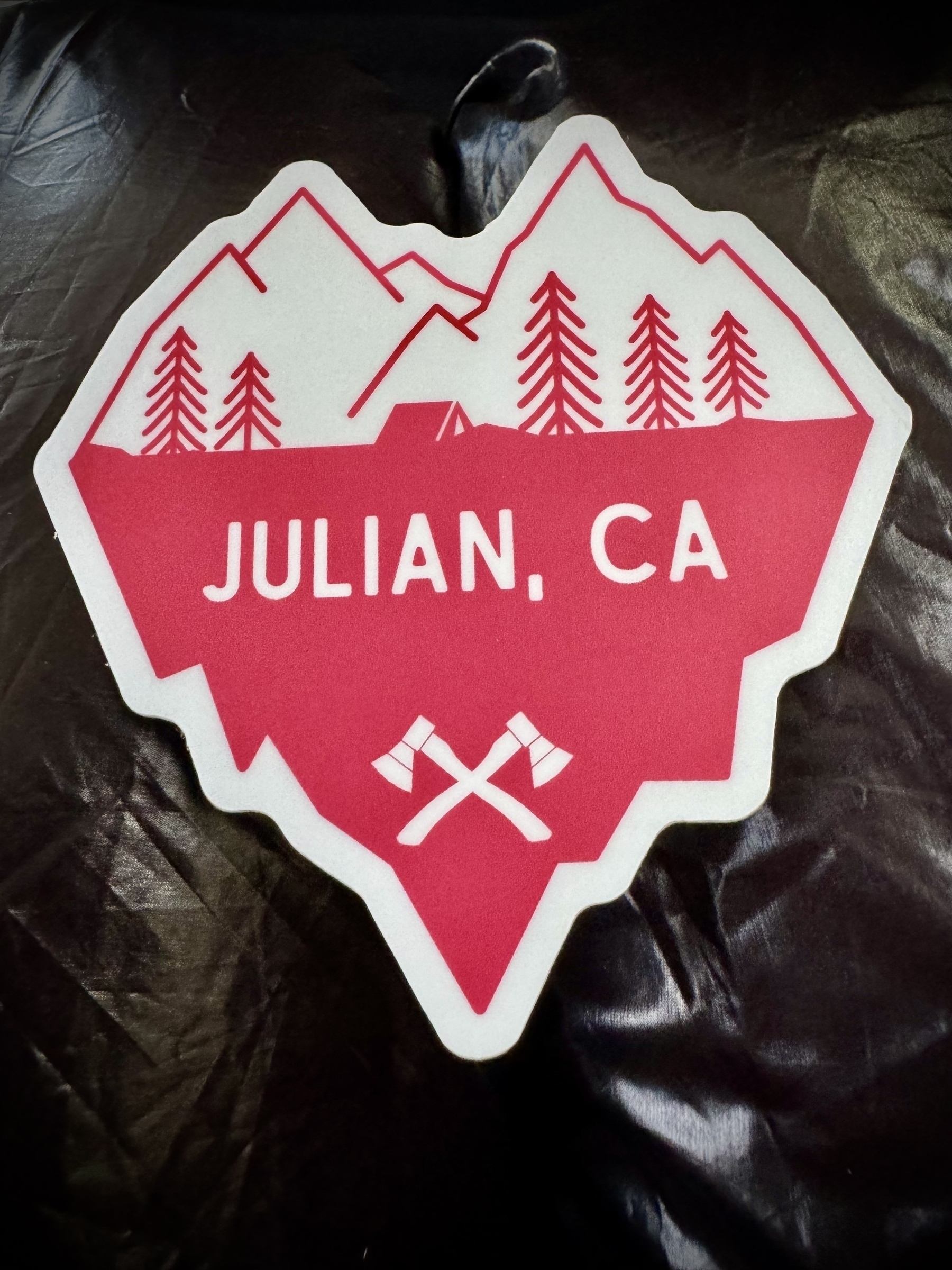
Zero day at Julian
First zero day1 in Julian, a small town in San Diego County. It was founded for the purpose of housing those who came to prospect for gold and other valuable natural resources of which California – along with neighboring Arizona – was very rich in the late 1800s.
We already knew Julian was a very hiker friendly place, but we experienced it firsthand. Not only the snack of apple pie and ice cream offered to all the hikers, but also a dinner in a Mexican restaurant that an American couple decided to pay for us because we are Italian, came from the other side of the ocean to hike and explore their country2. A gesture of friendship and kindness that left us stunned and wordless, and for which we can only be thankful 🙏
The first trial
I don’t know when I got around to writing last night, but tonight was tough. The trail really tested me for the first time with some slightly adverse weather conditions: intermittent gusts of wind but strong enough to make it impossible to pitch the tent. We walked longer than planned – I think almost 25 kilometers – so as to shorten the last stretch before Julian as much as possible. Tomorrow we should have about fifteen kilometers to go 🎉 Then a city, which means: a bed, shower, a dinner like god prescribes.
Not finding an easy tent site right away like other days has put me in an unwanted anxious state. And when I panic a little bit, I react a little bit like a child, “so I don’t do this anymore.” As if I really had a choice: I had to find a tent site, I had to set it up, I had to make dinner. There were no alternatives.
Now I’m ready to go to sleep, my tent set up behind two bushes near another group of hikers I don’t know. I’m not in a picnic area like yesterday, and here the night noises are quite a bit wilder. Am I scared? A little, yes. But of what, really? Of a mountain lion assaulting me during the night? Of rats gnawing on my tent guy lines or eating my shoes? What is really the worst thing that could happen? Probably nothing at all. Good night then.
The night at the Mount Laguna lodge – a very expensive place for a real shithole – made us starting late again. Quite late: before ten o’clock we were not yet back on the trail. I wanted to eat a real breakfast and went back to the tavern where we had lunch on Wednesday. After four French toasts with berries and maple syrup and two scrambled eggs, I feared I had eaten too much: I was reminded of the bad day during last year’s Translagorai when I binged on fried krapfen with jam, and until the evening my stomach was in turmoil; I could barely enjoy a few hours of hiking that day. Fortunately, this was not the case: after half an hour of hiking, my body immediately began to burn those precious calories and my engine was well warmed up for the day.
Despite the very late start we still managed to do 18 kilometers, which is not even 12 miles. It may not be much, but I’m arriving pretty tired at the end of the day. I am slowly building the stamina and muscles I will need in the weeks ahead, and no one is running after me. Rushing the first hundred miles or so is among the worst thing an aspiring thru-hiker can do.
The environment is more or less the same: coniferous forests similar to those of Mediterranean climates, low shrubs, many of which are the beginnings of future forests (my guess) restored after a fire, the corpses of which we encountered occasionally.
Tomorrow we have the first of two fairly intense days: we are 24 kilometers from the point where we will have to get the first hitchhike to get to the town of Julian, a classic stop for almost all PCT hikers. The problem is always being able to manage water, the critical element that determines all plans day by day.
The cold doesn’t want to leave me and is making everything a little more difficult, as if it wasn’t difficult enough already.
Starting from a camp in a wooded area that avoided sub-zero temperatures and a tent frozen with condensation, the trail returned to the typical desert environment of the past few days. And the sun returned to its desert-level warmth a few hours after dawn. In addition, having to climb up to Mount Laguna’s 1800 meters or so, the trail was definitely more challenging than the day before – even though we had planned to do a little less mileage. The last few miles before reaching Mount Laguna were almost relaxing inside a coniferous forest that is typical of Mediterranean areas (like Liguria or Sardinia). Mount Laguna is an outpost where less than a hundred people live there. It is mostly a summer vacation destination.
Playing against Garry Kasparov
I was thinking about the 2022 Camino de Santiago and how easy it was (okay, there have been bad days). The light backpack, the route a well-trodden path just outside an urban center, the shower always available at the end of the day, a hot – and often very tasty – meal chosen from an extensive menu. Sometimes we slept in big rooms that not even at the shabbiest oratory youth camp you would get. Overall, it was like playing a chess game against a beginner (like me).
It’s only been three days that I’ve been walking this trail, one of the three most celebrated in the entire United States, and it’s just a whole other league: other distances, other difficulties, truly pristine environment where you can walk miles without encountering something that belongs to humans. And it’s like playing a game against Kasparov.
Here I am. At this point in the space-time of the universe where I happened to live. Probably a predetermined point, but I can’t get it out of my head that everything I’ve done in the past five hundred days has allowed me to be right here, right now. Now it all begins, for real.
Coraggio, lasciare tutto indietro e andare, partire per ricominciare.
Che se ci pensi siamo tutti di passaggio.
E per quanta strada ancora c’è da fare, amerai il finale.
– “Buon viaggio”, Cesare Cremonini
“What are you actually able to bring home?”
What skills I think I can gain or train. Obviously this is a wishlist, I will try to answer again in a few months and see if I got it right.
- Strengthen my way to approach any situation, perhaps seemingly insurmountable, with the right mindset. That is, to avoid, as much as possible, panic, but also to enjoy it fully, without investing too much energy in trying to hyper-rationalize.
- Improve my self-confidence, that is, the belief that I am able to embark into something, weighing the risks I am willing to take. This means expanding my comfort zone by working on accepting more and more of the inconveniences that in daily life we do everything to avoid like the virus of a pandemic (we all know something about that by now 😄)
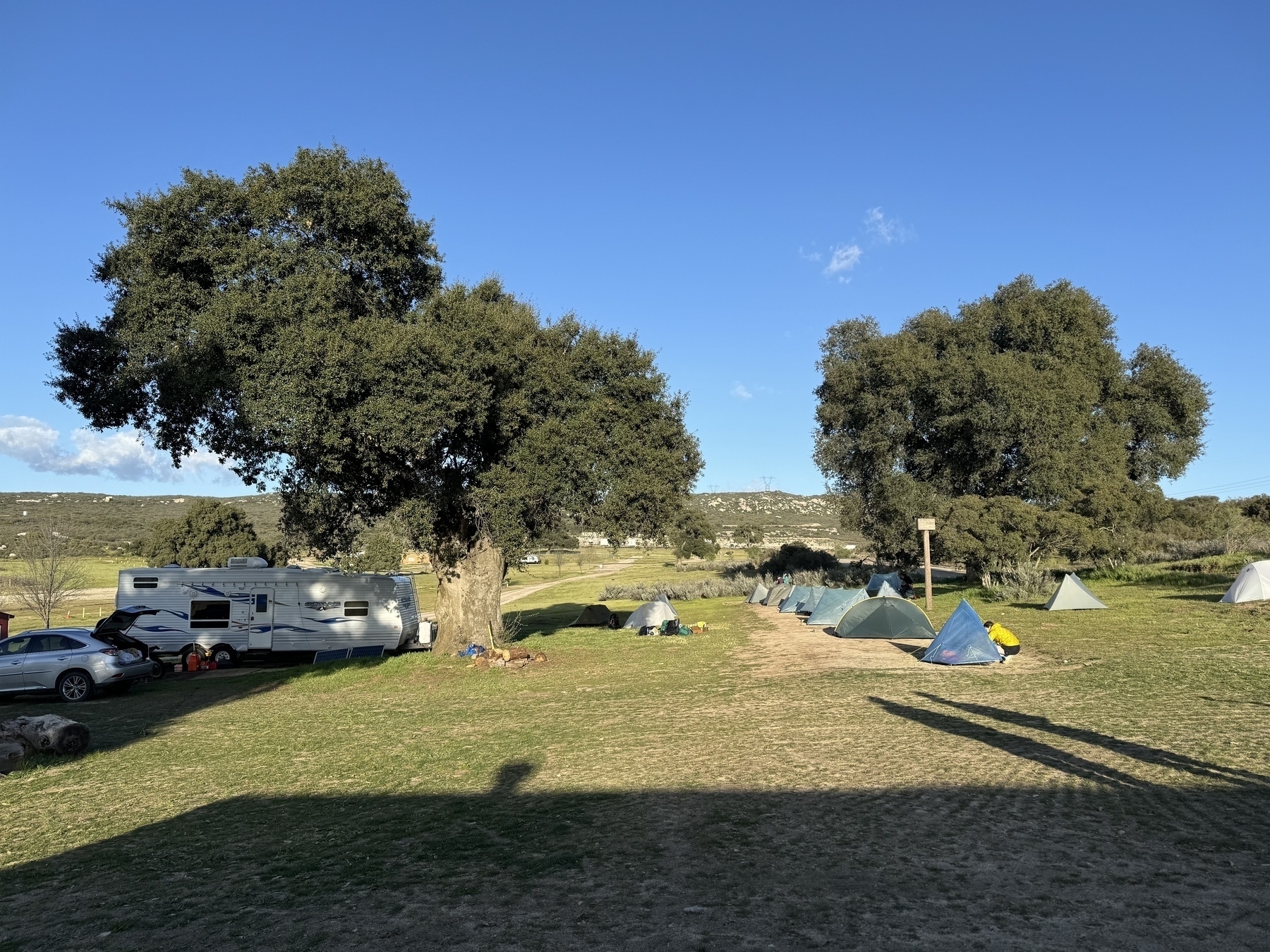
“What is your deepest fear facing this journey?”
I would say that’s among the questions I have been asked more often – and understandably so. There are the most obvious and concrete fears, such as that of an injury or some other unforeseen serious event. They are definitely deep, visceral fears because they concern my own safety, but I can’t really get rid of them – and perhaps it would even be harmful to do so, as someone who has studied neuroscience or psychology would tell me.
Among the fears I believe (and hope) I can work on there’s definitely that of having to rely only on myself, on my own strength (mental and physical) for a fairly long time. What will happen if I’d have to surrender or let go? If an external circumstance would show me that all my skills are like blunt weapons?
There is the fear you feel when you realize that you are extremely vulnerable, despite everything you know or have. And it takes very little really: sleeping alone in a tent in a place you don’t know, perhaps during a thunderstorm, or having to traverse an environment that’s immediately hostile to you.

Interview with myself
I wanted to write so many things about my grand adventure, but I raised the bar too much (as always) and got stuck in the usual loop of thoughts (read: perfectionism).
However, I want to do one thing before my departure: I’m interviewing myself and share publicly my answers to the questions I collected from several people who were curious to know about my upcoming hiking trip. Here they are:
- What is your deepest fear1 facing this journey?
- What are you actually able to bring “home” in your daily life from these spiritually profound experiences?
- What impact do you think this experience will have on your everyday life?
- Are you ready to be mentally challenged more than ever?
- Are you ready to fail?
-15 days to my PCT start.
-
That you carry with you or want to get rid of. ↩︎
Finished reading: Good Material by Dolly Alderton 📚
Had a lot of fun reading this during two train trips. A seemingly light read that hides under the surface some witty and bitter humor about couples, relationships, singlehood, and parenting, all sustained by a smooth writing rhythm. Nora Ephron’s presence is palpable, and it’s great!
I’m making a dream come true
I begin today to write about something – a project, I would call it – that I have been thinking about, with ups and downs, since 2015. Nine years ago, however, this project was just a dream, one of those wishes that in our minds always begin with “how I wish I could do X.” The verb “could” indicates many things here: enough money, time, independence, energy. A dream, however, as well as many of ours “New Year’s resolutions,” does not go very far on its own; it is confined to another dimension from which it is not always easy to find a path that brings successfully to reality.
The dream became a concrete project only in September 2022, precisely 1 year 4 months 9 days ago. I was at one of my dearest friends’ wedding and, during the best man’s speech, I announced publicly and for the first time what I had planned to do in 2024. The action was simple: walking. The where quite irrelevant to many: on the American West Coast. The duration and length were daunting, to say the least: about six months and just over four thousand kilometers.
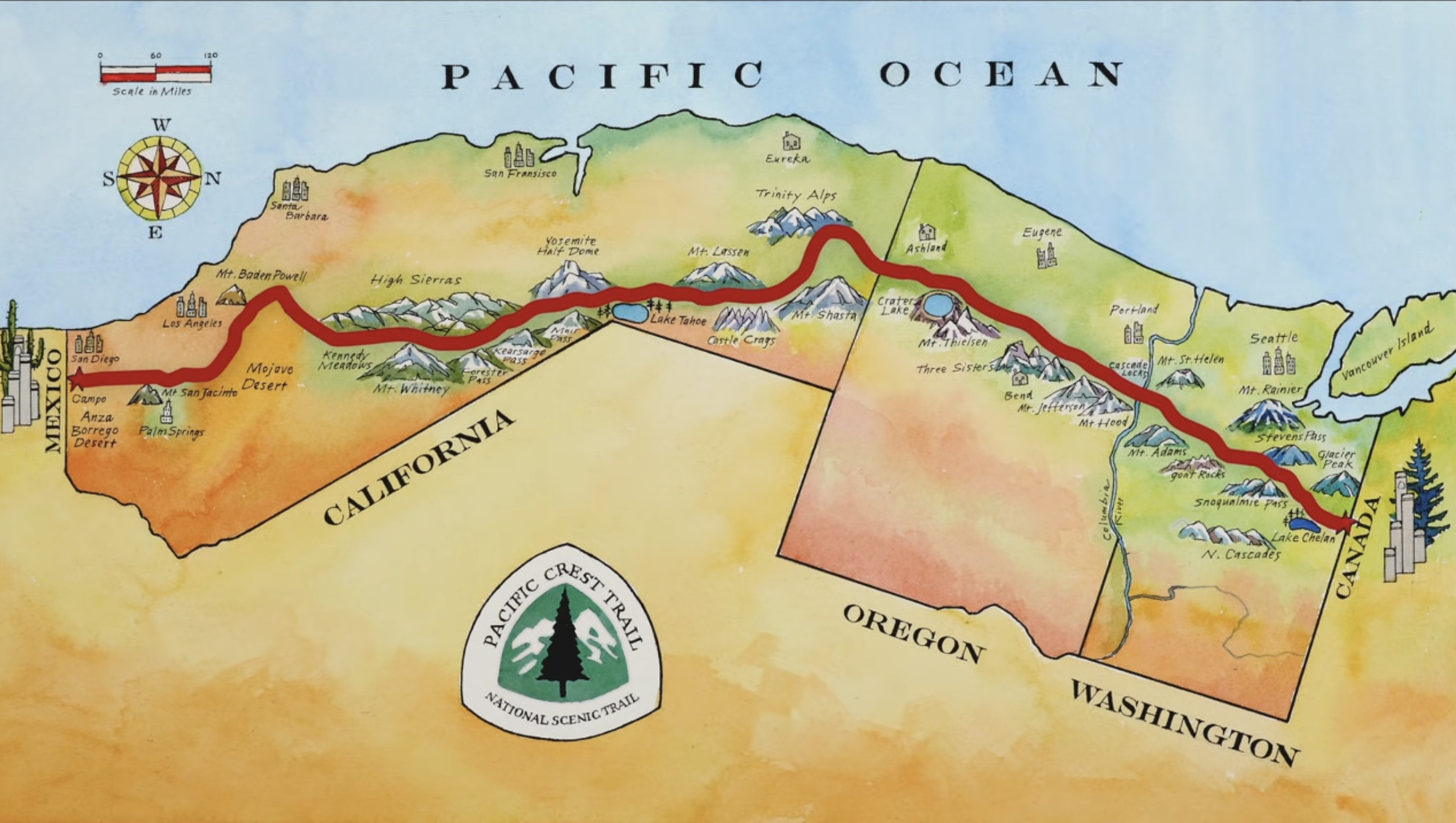
🎅🏻🎄 Day 9: Mirage Maintenance ⭐⭐
Dopo aver attraversato il deserto indenni, arriviamo a un’oasi ristoratrice. Il narratore ci fa notare che, sospesa proprio sopra di noi, c’è un’altra isola galleggiante completamente fatta di metallo. Ci aspettiamo di doverla esplorare prima di Natale.
Nel frattempo, decidiamo di studiare l’ecosistema dell’oasi. L’input è un report di come alcuni parametri evolvono nel tempo:
0 3 6 9 12 15
1 3 6 10 15 21
10 13 16 21 30 45
🎅🏻🎄 Day 6: Wait For It ⭐⭐
Come sa chiunque abbia partecipato ad almeno un paio di Advent of Code, le difficoltà non sono sempre crescenti, ma piuttosto seguono un ordine calibrato dal creatore della challenge. Va detto: non sempre questa calibrazione è centrata, secondo me, ma rompe la monotonia di una progressione lineare della difficoltà. Oggi quindi si è tornati a livelli un po’ più terreni, ma non senza alcuni aspetti interessanti che vale la pena discutere.
Sempre nel tentativo di capire perché manchi l’acqua necessaria alla produzione della neve, ci imbattiamo in una competizione di imbarcazioni giocattolo. E dato che siamo competitivi – altrimenti non saremmo qui – decidiamo di iscriverci e di studiare una strategia per vincere senza troppe difficoltà. Anzitutto, diamo un’occhiata ai tempi e alle distanze record passate:
Time: 7 15 30
Distance: 9 40 200
Le unità sono irrilevanti, ma le regole di come funziona una gara no: nel tempo assegnato a ogni gara (prima riga), ogni partecipante può scegliere quando far partire la propria barca. E perché non dovrebbe farla partire subito? Perché ogni barca ha bisogno di essere caricata per acquisire una certa velocità. Più tempo la carichiamo, più veloce andrà. Però, più tempo rimarrà ferma a caricarsi, meno tempo avrà a disposizione per spostarsi. Vince chi arriva più lontano.
🎅🏻🎄 Day 5: If You Give A Seed A Fertilizer ⭐
Oggi decisamente il giorno più difficile. Ci ho dedicato non so più quante ore (forse sei o sette nell’arco dell’intera giornata), e sono riuscito a portare a casa la seconda parte solo con un approccio più procedurale in Python. Con Wolfram, non ci sono ancora riuscito perché continuo a incepparmi in nested loop e altri costrutti simili. L’ho già detto di come, a volte, un approccio procedurale è più diretto e facile da implementare di uno purely functional. Ma voglio comunque scrivere due commenti sulla Part 1, che mi sembrano interessanti.
Date alcune regole iniziali, dobbiamo rimappare dei range di numeri su altri range. Queste remapping rules si concatenano, cioè i risultati di una diventano l’input della successiva.
